|
Fight GMO Foods, Starting with your Cereal |
Originally Published by Rodale
By Leah Zerbe
January 2013
http://rodale.womenshealthmag.com/cereal-gmos
http://rodale.menshealth.com/cereal-gmos
A new year means a fresh start, and what better place to start fresh than your morning bowl of cereal—the meal that greets many Americans each and every morning.
To help increase consumer awareness and hold companies responsible for GMO labeling, a national coalition has launched "GMO Inside," a campaign urging cereal giants Kellogg's and General Mills to label cereals containing genetically engineered ingredients, also known as GMOs. Better yet, the group wants the companies to take GMOs out of their products altogether.
Although GMOs have never been tested for long-term safety in humans, they're in many nonorganic foods, particularly processed foods like cereal that often contain genetically engineered soy, corn, and sugar beet ingredients. Most genetically engineered crops are developed so farmers can apply heavier doses of pesticides to the plants, something that's problematic given that the chemical of choice, Roundup (glyphosate), is systemic and winds up inside of the plants that we eat.
Read More: The 10 Best Organic Cereals
Here's how the GMO Inside coalition says you can help during January 2013:
Visit the group's Take Action website and sign a petition. You'll also find company phone numbers and Facebook links so you can air your concerns about unlabeled GMOs in popular brand-name cereals.
Direct consumer-to-company contact is gaining popularity, particularly since Prop. 37, a ballot proposition that would have forced GMOs to be labeled in foods sold in California, was defeated last November. "We have been completely blown away by the amount of consumer support the GMO issue has created," says Alisa Gravitz, President of Green America. "Since Prop. 37 was defeated in California in November last year, consumer action has only increased. I am completely inspired by the parents who are standing up against major corporations for the right to know what they are feeding their kids. Kellogg’s and General Mills represent just the beginning of what this coalition is prepared to take on."
Read more GMO Inside News »
|
|
The 2013 GMO Fight |
Originally Published by Supermarket News
By Robert Vosburgh
January 18, 2013
http://supermarketnews.com/blog/2013-gmo-fight
Last year ended on a down note for advocates seeking regulations for the labeling of food products that contain genetically modified ingredients. The atmosphere soured on Election Day, when voters in California defeated Prop 37, which would have mandated GMO labeling. The hard-fought battle pitted consumer and environmental advocates against some of the biggest food companies in the business.
Some industry observers (including yours truly) thought the failure in California would bring about a period of re-assessment, a back-to-the-drawing-board period. The thinking went that supporters needed some time to figure out a different strategy, since going the public question route proved very costly in both money and results.
No way. The fight has moved almost immediately to Washington state, where 350,000 signatures were delivered last week to the Secretary of State's office petitioning for a ballot measure that would require the labeling of GMOs. The “People's Right To Know Genetically Engineered Food Act" is almost identical to Prop 37 in that it requires any food or beverage that contains GMOs or ingredients derived from GMOs to be clearly labeled at the retail level.
There’s also agitation in New Mexico, where a state lawmaker has “pre-filed” a bill that would amend existing labeling laws to include GMO-derived products. This is a slightly different tactic from the California and Washington proposals, since it’s not trying to create an entirely new law. And in Vermont, efforts are underway to re-introduce a labeling bill that passed committee, but failed to come up for a full vote last year. Will these legislative initiatives have a better chance of success than public questions? Time will tell.
There’s also action outside of the political arena, with consumer groups directly confronting manufacturers through public pressure. GMO Inside, a coalition of businesses and organizations, is asking shoppers to sign an online petition that will be sent to two to the nation’s largest cereal and CPG companies, Kellogg's and General Mills.
GMO Inside, a coalition of businesses and organizations, is asking shoppers to sign an online petition that will be sent to two to the nation’s largest cereal and CPG companies, Kellogg's and General Mills.
The group is also urging consumers to call the companies directly, or to post GMO labeling requests on the manufacturers’ Facebook pages.
“Since Prop 37 was defeated in California in November last year, consumer action has only increased,” says Alisa Gravitz, president of Green America, of the of members of GMO Inside. “Kellogg's and General Mills represent just the beginning of what this coalition is prepared to take on.”
These New Year’s efforts represent the groundwork for what will surely become a spring awakening. The defeat in California hasn’t discouraged proponents from getting right back up and charging back into the battle. Two states are considering labeling laws and the chorus of voices calling for GMO labeling continues to grow.
This is no longer about who has the deepest pockets. There’s a swell of popular sentiment that’s beginning to rise. At some point, perhaps as early as this year, no amount of money in the world is going to be able to silence the issue — or its supporters.
Read more GMO Inside News »
|
|
Organic or Local? |
You walk into the grocery store, wanting to buy some Granny Smith apples for a pie you're planning to bake. You find there are two types -- organic apples from across the country, or apples from a local farm that uses chemical pesticides and herbicides. Which do you choose?
It's a conundrum we've all faced at one time or another; in this issue, our editors consult with the experts, and offer Green America's take on this issue. (Bonus: a clip-out "Organic or Conventional" wallet card to remind you as you shop which items are most important to purchase organic.) |
|
Coalition asks cereal companies to get the GMOs off the breakfast table |
Originally Published by Examiner.com
By Kimberly Lord Stewart
January 17, 2013
http://www.examiner.com/article/coalition-asks-cereal-companies-to-get-the-gmos-off-the-breakfast-table
A staple of the American breakfast table has been boxed in by controversy in 2012 and 2013. Cereal sales have been slipping in the past few years, unit sales dropped by 4% in 2012, largely due to higher prices from global-grain shortages due to extreme weather. Now cereal makers have something new to worry about, a campaign to label genetically modified (GM) cereals. GMO Inside, a coalition dedicated to helping consumers to know whether or not foods are genetically engineered, today (Jan. 17) announced that it wants Kellogg’s and General Mills to label or remove the ingredients in their products that are genetically engineered. For cereals, this could apply to as much as 80% of ingredients, including corn, soy, and processed sugars made from corn.
Throughout January, GMO Inside is calling on consumers to sign petitions, phone the companies to request non-GMO products, and take action on the Facebook profiles of each company and their many brands. GMO Inside is also urging Kellogg’s and General Mills to pledge not to fund any opposition to I-522, the Washington State ballot initiative for GMO labeling, which will be up for a vote in November 2013—or any other initiatives and legislation emerging in states around the country.
To date, more than 5,000 consumers have taken action with GMO Inside signing a petition to General Mills to remove GMOs from its bestselling Cheerios line of products, and more than 17,000 Facebook fans helped to shut down the company’s Cheerios Facebook app in December 2012.
“We're calling on consumers to get a fresh start this year by beginning every day with a healthy breakfast, free of GMO ingredients," said Elizabeth O'Connell, GMO Inside Campaign Director. "Putting Kellogg's and General Mills under our January spotlight is part of GMO Inside's commitment to educate consumers about which products are likely to have GMO ingredients. We'll call attention to new products every month."
GMO Inside believes that everyone has a right to know what’s in their food and to choose foods that are proven safe for themselves, their families, and the environment. Both Kellogg's and General Mills sell their iconic products in Europe without GMO ingredients. In Oct. 2012, General Mill and Nestle decided to lower the sugar content in cereals sold outside the United States. The news was met with skepticism from health-watch dog groups in the EU. But it isn't know if US consumers can expect the same efforts, especially given that GM grains are to intrinsic to the American agricultural system.
Thank you for your interest in this story. Proceeds for all Examiner.com stories written by Kimberly Lord Stewart are donated to charity for an educational farm for children in Colorado ( Ed and Ruth Lehman Longmont YMCA). Link here for more information, subscribe for regular story updates, and follow on facebook. Thank you again. Every story and photo click will go far to help children's health and wellness.
Read more GMO Inside News »
|
|
How To Tell If A Vitamin Is Natural Or Synthetic |
Originally published by Food Matters
Source article
Some consumers do not know how to identify a natural vitamin from a synthetic one. Vitamins and mineral supplements may contain labels that are too complicated for you to understand. You may not even know what to look for in a vitamin or mineral supplement.
Some manufacturers of commercial vitamin and mineral supplements add synthetics to vitamin products, typically to increase the vitamin's potency, but many synthetics are made from derivatives of coal tar - a known carcinogen found in cigarette smoke. This is only one of the reasons why it is important to talk to your doctor before taking any new supplement.
5 Steps To Identify The Ingredients On A Vitamin Label
Step 1
Look for the words "100 percent natural" on the product's label. Some product labels may contain the words "natural," but manufacturers can claim "natural" on their nutritional products if at least 10 percent of the product comes from natural food sources. The Organic Consumers Organization recommends looking for products that contain "100 percent plant-based" or "100 percent animal-based" on the product's label.
Step 2
Find the "food source" list on the products label. If the product's label does not contain a list of natural food sources, then the product is synthetic. Look for food sources such as yeast, fish, vegetable and citrus.
Step 3
Identify whole foods in the ingredient list instead of the particular nutrient. Dr. Ben Kim, a chiropractor and acupuncturist with his own radio show, says to look for foods on the list of ingredients that contain a certain vitamin, such as "acerola cherry powder," which contains vitamin C. If you can identify "vitamin C" in the ingredient list, Kim says you can almost guarantee that the vitamin is synthetic.
Step 4
Look for salt forms on the product label, a synthetic added to supplements for increasing the stability of the vitamin or mineral. Some of the salt forms to look for include acetate, bitartrate, chloride, gluconate, hydrochloride, nitrate and succinate.
Step 5
Learn how to read the product's label by looking for keywords that indicate the supplement is synthetic. Words that end in "ide" or "ate" indicate that the product contains salt forms, which are synthetics.
For instance, if you see chloride, hydrochloride, acetate or nitrate on the list of ingredients, the manufacturer used synthetics for the product.
Additionally, the letters "dl" that appear before the name of an ingredient indicates the supplement is synthetic. As an example, look for "fish oils" when buying a vitamin A supplement. If the product's label states "palmitate," it is a synthetic vitamin A supplement.
Common Synthetic Vitamins to Avoid
- Vitamin A: Acetate and Palmitate
- Vitamin B1 (Thiamine): Thiamine Mononitrate, Thiamine Hydrochloride
- Vitamin B2 (Riboflavin): Riboflavin
- Pantothenic Acid: Calcium D-Pantothenate
- Vitamin B6 (Pyridoxine): Pyridoxine Hydrochloride
- Vitamin B12: Cobalamin
- PABA (Para-aminobenzoic Acid): Aminobenzoic Acid
- Folic Acid: Pteroylglutamic Acid
- Choline: Choline Chloride, Choline Bitartrate
- Biotin: d-Biotin
- Vitamin C (Ascorbic Acid): Ascorbic Acid
- Vitamin D: Irradiated Ergosteral, Calciferol
- Vitamin E: dl-alpha tocopherol, dl-alpha tocopherol acetate or succinate
NOTE: The “dl” form of any vitamin is synthetic.
Tips and Warnings
Talk to the pharmacist before purchasing a vitamin or mineral supplement. A pharmacist can identify a natural or synthetic vitamin supplement, and help you learn to identify them yourself. Let your pharmacist know if you are allergic to any foods or medications.
Never take a new vitamin supplement without talking to your doctor first.
Source Link: http://www.livestrong.com/article/383628-how-to-tell-if-a-vitamin-is-natural
The above list taken from: http://www.globalhealingcenter.com/natural-health/synthetic-vs-natural-vitamins/
This article was assembled from the two links above and published on Food Matters
|
|
FTC Green Guides Shut Down Sweeping Green Marketing Claims |
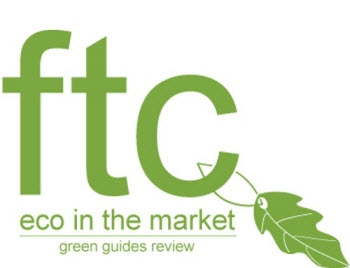
The Federal Trade Commission (FTC) recently released revisions to its green marketing guidelines which prohibit marketers from making sweeping green claims. Find out what the new guidelines mean for your business.
Commonly known as the Green Guides, the FTC guidelines regulate how marketers may promote the environmental benefits of their products and services.
The revised Green Guides now expressly prohibit marketers from making “general environmental benefit claims,” such as “green,” “eco-friendly” and “environmentally sound,” implying a product or service is good for the environment without making clear exactly why or how.
The FTC developed the Green Guides in response to growing demand from both mainstream consumers and the business sector for a more transparent approach to green messaging.
“The general public is getting tired and suspicious of meaningless green claims. But that doesn’t mean they’re not interested in sustainability. And many of those who do want sustainable products are becoming more sophisticated in their understanding of what that means. Offering accurate, substantiated data can help build a trusting relationship with these consumers, who might otherwise remain wary and cynical,” says Anne Michelsen of Green Ink Copywriting.
Michelsen recommends that companies that have built green messaging into their identities make sure to back up their claims with verifiable information. Read her review of the new Green Guides and how they will impact green marketing.
Concerned about the FTC Guidelines? Don’t just tell your customers you’re a green business – get certified. Learn how to get your Green Business Certification »
|
|
Green Your Holidays: Avoiding Toxic Toys |
As a new Godmother, I have a responsibility to spoil my Godson rotten with lots of toys. I also feel responsible for protecting him from the toxins found in many children’s products. We’ve heard about lead in toys coming from China, but we hear less about PVC plastics, phthalates, and bisphenol-A, which are found in a huge number of toxic toys made right here in the USA.

Dave Harrison's daughter teethes on a wooden ring, which he carved for her. Photo credit: Dave Harrison.
The intrepid editors at Green America have written extensively about toxic toys, what the dangers are, and how to avoid them. I've pulled from past articles to give you a quick and easy run-down.
Toxic Toys: What To Look For
PVC and Phthalates
What they are: Polyvinyl chloride plastic, known as PVC or vinyl, is identifiable by a #3 or “V” symbol. Of particular concern for children’s health are vinyl toys such as teethers, “rubber duckies,” beach balls, and bath books. These are often made of a flexible vinyl that has been softened using “plasticizer” chemicals called phthalates.
Why they're dangerous: Studies have identified phthalates as a hormone disruptor. Phthalates may also cause liver and kidney lesions, a higher risk of certain cancers, and may exacerbate asthma and allergies in children.
How you can avoid them: Avoid PVC plastic: Unfortunately, most plastic toys don’t carry clear information about the type of plastic they’re made of, though some PVC toys may carry a #3 or the word “vinyl.” Instead of toys that contain vinyl/PVC, choose toys made of alternative materials, including FSC-certified wood or natural fabric.
Although plastics #1,2,4, and 5 don't contain these toxins, their safety is still questionable, and the editors at Green America wouldn't recommend them for kids still putting things in their mouths.
Bisphenol-A
What it is: Bisphenol-A (#7) is legally used to make transparent, hard, unbreakable plastic products, such as baby bottles and “sippy” cups, and CD jewel cases.

Photo credit: DrSam via Flickr
Why it's dangerous: Very small amounts of this chemical have been shown to cause serious reproductive damage in mice, especially when the exposure occurs in utero. Exposure may cause prostate cancer, breast cancer, female infertility, and obesity.
How you can avoid it: The Natural Resources Defense Council advises parents to avoid polycarbonate (#7) plastic. When in doubt about items you already own, call the manufacturer and ask. If you notice that a clear plastic bottle or cup has become worn, or that the clear plastic of a toy has become cloudy, that may be evidence of off-gassing bisphenol-A. Throw it out. Instead, choose baby bottles and spill-proof cups made of glass or metal.
Lead
What it is: Just because a toy is plastic-free, doesn't make it safe. You'll still want to watch out for lead paint. In the US, it is illegal for the paint to contain more than 0.06 percent concentration lead -- but some toys have been found to violate those regulations.

This lapel pin is green-themed, but don't be fooled. It contained excess levels of lead. Photo by US CPSC.
Why it's dangerous: When ingested, lead can cause nerve damage, learning and behavioral problems, reproductive damage, and irreversible brain damage. It can also increase the risk of cancer.
How you can avoid it: Avoid painted toys made before 1978, when lead paint was banned in toys, residential structures, and hospitals. Try to buy toys made in the US, Canada or the EU, where lead regulations are stronger. The Coalition to End Childhood Lead Poisoning advises parents to avoid fake painted pearls, including Mardi Gras beads, and cheap children’s jewelry of the type sold in vending machines or given away as party favors. A 2006 study by Ashland University researchers found that 70 percent of the 20 cheap toy jewelry samples they tested contained illegal levels of lead.
The Good Guys
As the season for buying lots of toys for my Godson gets underway, I’ve been perusing the National Green Pages to find him a safe teething toy. I compiled a list of great toy maker who have been certified by Green America at the gold level, and I'm sharing it with you! But first, here are two examples of what makes all of our member businesses so great when it comes to toys.
North Star Toys: Since 1979, Tim and Connie have been designing and making all of the toys they sell at North Star Toys. Every toy is nontoxic and safe for children and the environment. They use a food-grade mineral oil for the finish on each toy, and all paints are certified nontoxic. You can read our full article on North Star Toys here.
Hazelnut Kids: Hazelnut Kids creates sustainable toys free of toxins. "Besides the fact that we only carry “green” toys, we strive to make every step in the retail process as sustainable as possible," says Tracy Coe, owner of the company. You can read our full interview with Tracy here.
Green Toy Prize Drawing!
Comment below for a chance to win one of two prizes!
1. DIY Chewing Gum Kit from Glee Gum. The ingredients include sustainably harvested chicle, and GMO-free ingredients like Fair Trade certified sugar. Glee Gum is certified by Green America at the gold level.

2. Color-it-yourself schoolhouse made by the Imagination Box Co. and sold by Wild Dill, an online retailer that sells organic and Fair Trade toys, clothing, and bedding for children.

Congratulations to Mariana, the winner of last week's Green Your Holidays prize drawing. She won a Fair Trade gift basket from Higher Grounds Trading Co., featuring a bottle of Fair Trade olive oil, a bag of Fair Trade coffee, and a Theo Chocolate Fair Trade cherry and almond chocolate bar.
Finally, here is that list I promised you:
Terra Experience -- hand-woven, ethnic doll clothes that fit American Girl Dolls.
Naturally Playful -- fair trade and organic toys for tots and kids
Twig Living -- toys for ages 0 - 15, including games and arts & crafts.
Nature's Crib -- wooden baby rattles and teething rings
Eco Toy Town -- non-toxic teethers, toys, board games, and arts & crafts
Global Goods Partners -- fair trade knitted toys, booties and purses
Global Green Pals -- environmental-themed dolls like "Carbon-Offset Chet" and "Clean Air Kate"
Just Goods -- wooden toys and blocks
Maple Landmark Woodcraft -- wooden toys, games and gifts made in the USA
Organic Baby Gift Boutique -- costumes, art supplies, and organic toys
Organic Keiki -- organic and non-toxic toys
Peapods -- toys for babies and kids
Sarah's Silks -- silk toys for babies and kids
Taraluna -- fair trade and organic toys for kids. Includes organic teething toys for little ones, and games for older kids.
|
|
GMO Inside Campaign: Cheerios Facebook Page Flooded by Anti-GMO Comments |
Thousands of Negative Posts Result in General Mills Removing App Encouraging People to Share What Cheerios Means to Them.
December 6, 2012//Washington DC// The GMO Inside campaign announced today that thousands of concerned consumers have flooded Cheerios’ Facebook page (http://www.facebook.com/Cheerios) distressed about genetically engineered ingredients in Cheerios and outraged at General Mills contributing over $1.1 million to “No on 37” in California, the narrowly defeated ballot initiative that would have required the labeling of foods with genetically engineered ingredients. Since November 29, the GMO Inside Campaign has been encouraging visitors to its Facebook page (www.facebook.com/GmoInside) to post comment on Cheerios’ Facebook page regarding GMOs. The outpouring of comments demonstrates that the drive to label GMOs that led millions of people to support Prop. 37 in California is growing throughout the U.S.
Visitors to Cheerios’ Facebook page also used a Cheerios app that allowed users to provide comment on what Cheerios means to them (and which then posted the comments in Cheerios’ trademark font) to call out genetically modified organisms (GMOs) in Cheerios. In response, General Mills removed the app from its Facebook page.
“The sheer volume of comments on Cheerios’ Facebook page raising concerns around genetically engineered ingredients is incredibly inspiring,” stated Alisa Gravitz, CEO and president of Green America. “It is also amazing to see the creativity that visitors to Cheerios’ Facebook page use to call out Cheerios on using their customers as a science experiment for GMO consumption. Cheerios is a cereal that is frequently fed to children, and many of the comments are from concerned parents who are worried about the fact that they have been feeding a cereal with genetically engineered ingredients to their children.”
Visitors to the Cheerios Facebook page used the now-discontinued app to post comments such as “Caution GMOs,” “Cheerigmos,” and “We are not lab rats.” While General Mills has removed the app and the posts generated by it from their Facebook page, examples are preserved at the Cheeseslave website (http://www.cheeseslave.com/cheerios-gmo-backlash-facebook-campaign-fail/) and the Happy Place website (http://www.happyplace.com/user-post/2233/cheerios-gmo-pr-facebook-fail).
General Mills has left thousands of comments critical of Cheerios and GMOs on its Facebook page. Many comments are from parents who are concerned about the fact that they have been feeding Cheerios to their children (“So sorry that the food my kids loved as toddlers is one I can't support anymore. I can't believe that General Mills has the well-being of its customers in mind when it contributes to movement against labeling of GMOs.”) However, General Mills has not posted to the Cheerios’ Facebook page in over a week (from 11/29 - 12/5), deviating from its norm of posting every two days.
"It appears that General Mills is trying to make sure its fans do not come to the Cheerios Facebook page and see an outpouring of concern about the product," said Todd Larsen, Green America Corporate Responsibility Programs Director. "At GMO Inside’s Facebook page, people can see which ingredients in Cheerios and other products are likely to be genetically modified. Cheerios needs to label or remove the GMO ingredients. Consumers have a right to know."
ABOUT GMO INSIDE
GMO Inside is a campaign dedicated to helping all Americans know which foods have GMOs inside, and the non-GMO and organic certified alternatives to genetically engineered foods. We believe that everyone has a right to know what’s in their food and to choose foods that are proven safe for themselves, their families, and the environment.
GMO Inside gives people information and tools, and provides a place for a growing community of people from all walks of life, to share information and actions around genetically engineered foods. Join the campaign at http://www.gmoinside.org , and take part in the GMO Inside community on Facebook (https://www.facebook.com/GmoInside) and Twitter (https://twitter.com/GMOInside).
ABOUT GREEN AMERICA
Green America is the nation’s leading green economy organization. Founded in 1982, Green America (formerly Co-op America) provides the economic strategies, organizing power and practical tools for businesses, investors, and individuals to solve today’s social and environmental problems. www.GreenAmerica.org
MEDIA CONTACT: Leslie Maloy, lmaloy@hastingsgroup.com or (703) 276-3256. Alisa Gravitz, alisagravitz@greenamerica.org or 202-872-5311.
|
|
Green Your Holidays: 5 Tricks for Sustainable Shopping |
It’s that magical time of the year again—but is the tradition of giving gifts at odds with your feelings about consumerism? Do you worry about the environmental impact of buying a bunch of new things that might not really be used? Do you want a fat wallet, happy friends, and zero carbon-guilt? Of course you do!
5 tips for sustainable shopping and eco-friendly gift-giving
1. Giving & Receiving with Freecycle
Family and gifts can combine to make your home feel a little cluttered over the holidays. Right now is the time to take a preemptive strike at mess by paring down the stuff you already own.
Joining a Freecycle network is a great way to send your unwanted belongings on to a loving home. After signing up for your local Freecycle listserv, you’ll be able to send out notices about the items you want to give to other members, allowing them the opportunity to take that stuff off your hands.
Once you’ve given to the community a little, feel free to claim other items up for grabs. “Shopping” for holiday gifts on Freecycle can have an incredibly low carbon footprint, save you money, and help you give back to your community.
2. Thrift Store Shopping!
Buying something secondhand is much more environmentally friendly than buying it new. The fact that it’s easier on your wallet is just an added bonus. In the last issue of the Green American magazine, member Nancy Madsen had this to say about thrift store shopping:
“My large family didn’t want to stop exchanging gifts, but we didn’t want Christmas to break the bank, either—and we realized we were really losing the true Christmas spirit with all the stress of shopping. Probably 15 or 20 years ago, we decided to limit the amount spent to $5 per person and to encourage creativity. Many of us started resale shopping at places like Goodwill—or Value Village thrift stores, which support local nonprofits by paying them to collect used items.
"My family now spends one day shopping together in November, and we have lots of fun doing it. It has become a tradition that we all look forward to, and it has caused us to become resale shopping junkies. Now we buy most of our clothes at the resale shops as well. My sister and I have had numerous compliments on our outfits, and we often say Value Village is our clothing designer!"
3. Homemade Food & Body Care
Tiz the season for sneezin'—check out these home-made decongestant shower disks. Click on the image for a how-to.
Are you shopping for someone who seems to have everything they need, is moving to a smaller house, or otherwise cutting down on their belongings? Homemade food can be a great gift for these people.
Another option is homemade personal body care. Body care is often chock full of carcinogens and other toxins -- check out our article on poisons in conventional cosmetics and a few tips for protecting yourself.
Your homemade body care gifts will be safe for your loved ones and have a wonderful, personal touch. Plus, it will be used up, which is great for people who don't want "more stuff."
4. Homemade Gifts from Recycled Materials
You can transform recycled materials into unique gifts with super-low carbon footprints.
- A hollowed out book can be a thoughtful gift for a younger kid wanting a place to hide secret treasures.
- Have some old jewelry and wine-corks? Check out this tutorial for making gorgeous tree ornaments (I especially love the pictures).
- Cut out colorful little squares of used wrapping paper and holiday cards and write a few dozen things you appreciate about your loved one. Place the notes in a mason jar and decorate with recycled ribbon or a piece of colorful cloth. More on that here.
5. Buying New? Buy Green! (Also Win Some Gorgeous Soaps.) If you’re like me and think you’ll end up buying one or two gifts new this year, consider buying from certified green businesses. You’ll be supporting the green economy, which includes Fair Trade, fair wages, and green practices from recycling to sustainable sourcing. Check out businesses in our National Green Pages® holiday guide.
If you want to go the extra mile, buy from businesses certified by Green America at the gold level. This certification means that, according to our screening process, they are "operating on the highest level of social and environmental responsibility in the way they source, manufacture, and market their products and run their offices and factories." You can read more about it here.
Simmons Natural Body Care is one business we’ve certified at the highest level—gold. Check out these gorgeous organic rainbow soaps. They’ve donated a basket of these to us to give away to one of you.
All you have to do to enter to win is tweet about this article using the following link: http://bit.ly/Y71Y3l . If you don’t have a twitter account, just tell us about your own DIY gift traditions in the comments below, and we’ll enter you to win.
There are so many great ideas out there for greening your holidays. The most environmentally friendly ways are Freecycling, buying second hand or making gifts from recycled materials. If you're going to buy something new, just remember that there are some wonderful green business owners who have sustainability ingrained into every level of their business.
Your money has an impact on the world after you spend it—the holiday season is a great time to make sure the impact is a positive one.
Congratulations to last week's winner, Heather! Please email editors (at) greenamerica (dot) org to claim your Artisan Tea Blending Kit from Numi Tea.
|
|
Profit from the New Rules of Green Marketing |

Gain key insights for green marketing in this webinar from expert Jacquie Ottman, who shares strategies for green businesses from her award-winning book, The New Rules of Green Marketing.

Jacquie Ottman, a New York city-based expert on green marketing and advisor to Fortune 500 and entrepreneurial companies and several U.S. government eco-labels, is a sought-after speaker around the globe.
In this interactive webinar, Jacquie shares stories and strategies from her award-winning book, The New Rules of Green Marketing: Strategies, Tools and Inspiration for Sustainable Branding (Berrett-Koehler, 2011). The book emphasizes the need to take a lifecycle approach to developing and marketing greener products and packages in order to best address consumer needs, manage for sustainability and reduce the risks of greenwash.
Her book has been called “the new green marketing Bible" and “the end-all and be-all of green marketing.” It was named by Cambridge University (UK) as a Top 40 Sustainability Book.
Buy the book today with this special offer for green businesses: Get 35% off. Click here to buy the book at a special 35% discount.
Find out more about Jacquie’s book and work at http://www.greenmarketing.com.
{module New Rules of Green Marketing Webinar}
|
|
Whole Foods Drops Hershey’s Scharffen Berger Chocolates Over Child Labor Issues |
WASHINGTON, DC -- Whole Foods Market (NYSE: WFM) locations around the country will be removing one of Hershey’s high end products-- Scharffen Berger chocolate-- from shelves across the country by the end of the year due to Hershey’s failure to assure that the cocoa is sourced without the use of forced child labor.
Whole Foods’ decision to remove Scharffen Berger comes in response to more than 15,000 customers demanding that the natural foods grocer hold Hershey accountable for exploiting children for profit. Whole Foods’ decision follows more than 40 natural food retailers and coops publicly expressing concern about carrying Scharffen Berger and Dagoba products as a consequence of the giant chocolate maker’s refusal to address child labor in its supply chain.
In a letter to the Raise the Bar Hershey coalition, Whole Foods stated: “We do not take the concern over child labor or slave labor lightly, and we are currently in ongoing conversations with Hershey’s about its existing social accountability programs … Whole Foods Market is removing Scharffen Berger chocolate from our shelves pending receiving further information from Hershey’s.”
“We thank Whole Foods for taking the important step of dropping Hershey’s Scharffen Berger chocolates,” said Alisa Gravitz, President and CEO of Green America. “The decision to cut Scharffen Berger shows that Whole Foods knows Hershey’s isn’t committed to eliminating child labor from their products.”
However, the Raise the Bar Hershey campaign is disappointed that Whole Foods will continue to offer Dagoba products.
“Now, Whole Foods needs to drop Dagoba bars to strengthen the message that none of their products will be on Whole Foods’ shelves as long as Hershey is earning profits at the expense of child laborers,” says Kirsten Moller, co-founder of Global Exchange. Even if Dagoba is Rainforest Alliance certified, the coalition argues that Hershey’s overall lack of commitment to ethical sourcing means they should be shut out of high end, certified chocolate sales until they change their approach to cocoa overall.
According to a U.S. government-funded study, over 1.8 million children work in West Africa’s cocoa industry. Many of these children are exposed to dangerous working conditions and some are even trafficked and sold off to perform grueling labor. Hershey, and other major chocolate companies, source the majority of their cocoa from West Africa. Several major chocolate makers, including Mars and Ferrero, have agreed to make a major commitment to sourcing ethical chocolate but Hershey’s – the maker of Dagoba and Scharffen Berger - refuses to budge.
A coalition of groups including the Teamsters, Organic Consumer’s Association, Green America, International Labor Rights Forum, Global Exchange and other supporters are urging Whole Foods to take a stand on principal to refuse to sell any of Hershey’s individual products until the chocolate giant makes a major commitment to sourcing ethical cocoa.
“Socially conscious consumers shouldn’t be surprised that Whole Foods is willing to sell products from suppliers that are tainted by child labor,” said Judy Gearhart, Executive Director of the International Labor Rights Forum. “More than once, Whole Foods has turned a blind eye to the rogue conduct of its suppliers. For example, right now Whole Foods is refusing to hold its primary supplier UNFI, accountable for workers’ rights violations at its distribution center in Seattle.”
######
GREEN AMERICA is the nation’s leading green economy organization. Founded in 1982, Green America (formerly Co-op America) provides the economic strategies, organizing power and practical tools for businesses and individuals to solve today's social and environmental problems. www.GreenAmerica.org
GLOBAL EXCHANGE is a membership-based international human rights organization dedicated to promoting social, economic and environmental justice around the world. www.GlobalExchange.org
INTERNATIONAL LABOR RIGHTS FORUM is an advocacy organization dedicated to achieving just and humane treatment for workers worldwide. www.LaborRights.org
|
|
Fall 2012 |
|
|
Standards |
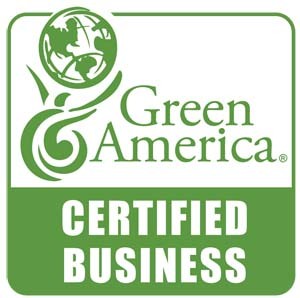
A guide to standards and certifications available to businesses and products.

Green America’s Green Business Certification
Green America is dedicated to harnessing the economic power of consumers, investors and businesses to promote social justice and environmental sustainability. Businesses displaying the Green America Seal have successfully completed our green business certification process.
More Standards and Certifications
Bird Friendly
A certification created by the Smithsonian Migratory Bird Center (SMBC). Bird Friendly standards are the strictest of the third-party environmental standards.
Certified Biodegradable
A certification assessment formatted to confirm that chemicals are not entering the environment at an alarming rate at which it becomes harmful. Products are also tested to verify if they can degrade safely.
Certified Humane Raised and Handled
A certification and labeling program that is “the only animal welfare label requiring the humane treatment of farm animals from birth through slaughter”. One of several that address animal welfare in meat and dairy production.
Certified Organic
USDA’s National organic Program regulates the standards for any farm, wild crop harvesting, or handling operations that wants to sell an agricultural product as organically produced.
Certified Vegan
A certification process in which an individual product may represent the logo if it does not contain animal products or byproducts and has not been tested on animals.
Cruelty Free
An international standards and certification program to end animal testing for cosmetic, personal care and household cleaning products. Endorses companies that meet the criteria of the Humane Standards.
Dolphin Safe
A certification that is part of the Tuna Tracking & Verification Program (US Department of Commerce) in which one of the requirements are tuna canners must submit a report of all tuna received at their facility in each month.
Fairtrade International
25 organizations working to secure a better deal for producers through establishment of international fair trade standards and support for fair trade producers.
Fair Trade USA
Certifier of Fair Trade products in the US.
Fair Trade Federation
The trade association for North American companies fully committed to supporting artisans in developing countries through the practice of fair trade. Focus on hand crafted items and textiles/ apparel.
Food Alliance
Operates a voluntary certification program based on standards that define sustainable agricultural practices and also includes auditing services.
Forest Stewardship Council (FSC)
The leading certifier for wood, paper and packing products globally. FSC coordinates the development of forest management standards throughout the different regions of the U.S. and the consumption of goods from well managed forests. Includes third party auditing against their standards.
Global Organic Textile Standard (GOTS)
Globally recognized as the leading processing standard for textiles made from organic fibers. It defines high level environmental criteria on the entire supply chain for organic textiles and requires compliance with social criteria.
GreenGuard
GreenGuard Certification enforces established standards on products for low emissions of volatile organic compounds (VOCs).
GreenSeal
Develops sustainability standards for products, services and companies and offers third-party certification. Also uses science-based programs to promote a more sustainable world.
IMO Fair for Life
A third party fair trade certification program in agricultural, manufacturing, and trading operations.
International Labour Organization
The international organization responsible for developing and overseeing international labor standards. It is the only ‘tripartite’ United Nations agency that brings together representatives of governments, employers and workers to jointly shape policies and programs promoting Decent Work For All.
ISO 14000
Developed by the International Organization for Standardization, the world’s largest developer and publisher of international standards, this is a series of international standards on environmental management. It provides a framework for a holistic, strategic approach to an organization’s environmental policy, plans and actions.
Leaping Bunny
This program administers a cruelty-free standard and provides assurance that no new animal testing is used in any phase of product development by the company and its associates. The standard and certification applies to bodycare and household cleaning products.
Marine Stewardship Council
The MSC has developed standards for sustainable fishing and seafood traceability. It is the world’s leading certification program for sustainable wild-capture seafood.
NutriClean
The Scientific Certification Systems’ (SCS) Pesticide Residue Free Certification assures that the produce contains no pesticide residues in final product. Does not comment on the use of pesticides and herbicides in growing or processing.
Oeko-Tex
Independent testing and certification system for textiles from all stages of production; fiber, yarn, fabric, apparel and accessories. Includes certification of environmentally friendly production facilities according to their standards and products are tested for harmful substances.
Rainforest Alliance
Works to conserve biodiversity and ensure sustainable livelihoods by transforming land-use practices, business practices, and consumer behavior. Farms are certified using the criteria of the Sustainable Agriculture Network.
SA8000
An auditable certification standard based on international workplace norms of the ILO conventions, the Universal Declaration of Human Rights, and the UN Convention on the Rights of the Child.
Salmon Safe
The certification of farms that follow healthy practices where the population of Pacific Salmon may thrive.
World Fair Trade Organization
A global network that advocates for the interests of producers, especially small farmers and artisans, and enables them to improve their livelihoods and communities through fair trade.
|
|
Awards or Grants for Small Business |
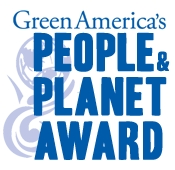
Opportunities to earn funding for your green business.

Green America’s People and Planet Award
These awards are for innovative green businesses that work on behalf of people and planet. Each quarter has a different theme and invites nominations from the public.
Thanks to a generous Green America donor, the People & Planet Award provides three $5,000 prizes each quarter to deserving small businesses to advance their green principles.
Learn about past winners in clean energy and serving local communities.
 Green Festival Ford Community Green Grant Green Festival Ford Community Green Grant
Ford sponsors these awards at every Green Festival that support local, actionable, innovative ideas to build sustainability in each Green Festival city's community. It's an opportunity to earn $5,000 to impact your community.
The Ford Community Green Grant encourages local non-profit organizations and community leaders to submit their sustainable, forward-thinking ideas to improve the environment or quality of life in their local community. Ford and Green Festivals select a group of finalists to present at the Ford Pavilion at each Green Festival. Attendees vote for their favorite project proposal, and the winner is announced on the final afternoon of the festival. We'll update when application dates are available for this year's festivals. See last year's Green Grant application.
More Award Opportunities
Intuit’s Love a Local Business - The competition for the $5,000 grants for small busiess lets fans, including customers, vendors, employees, and the community, determine who deserves some love.
Amber Grants – For assisting women who are trying to start small businesses, home-based or online. The grants are small, usually $500 to $1000.
Local Opportunities: Typically there are more grant programs for small businesses at the local level, especially with the increased focus on local sourcing. Review websites for state government, local government, economic development organizations, private corporations and foundations in your area or give them a call. Also listen to the webinar below from Association of Enterprise Opportunity – Green is also the Color of Money – to learn about other opportunities. Local SCORE offices may be familiar with programs in your area and the types of businesses for which these programs are best suited. (SCORE is a nonprofit association dedicated to helping small businesses get off the ground, grow, and achieve their goals through education and mentorship.)
Download this webinar from AEO:
Download the session audio »
Download the presentation:
Part I »
Part II »
Check out more webinars from AEO » |
|
Dirt-to-Shirt in North Carolina – TS Designs |
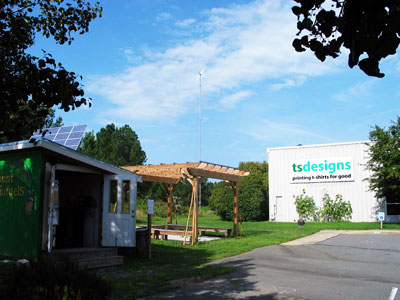
How TS Designs supports their community with a local supply chain.
By TS Designs
TS Designs (TSD) is a screenprinter located in Burlington, NC. We were founded in 1977 as a small screenprinting shop. By the late 80s and early 90s, TSD had over 100 employees and was printing apparel for companies like Tommy, Nike, Polo, Gap, etc. However, after the passage of NAFTA, that business began moving to Mexico (and later, overseas). Owners Tom Sineath and Eric Henry decided to change TS Designs’ business model to Triple Bottom Line – a model that considers economic prosperity, social justice, and environmental stewardship as three equal considerations. Since then, our product offerings – and customers – have changed dramatically in a more sustainable direction.
Building Community Development into the Program
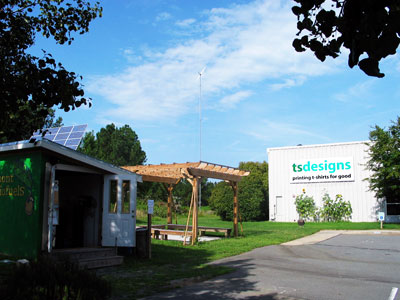
Cotton of the Carolinas began as the answer to a growing problem. Our flagship product was a certified organic cotton t-shirt made in America, but we found that more and more of that cotton was being shipped in from overseas. North Carolina is the United States’ third largest grower of conventional cotton, and over half of that cotton is shipped offshore to be turned into products. So while a valuable commodity grown in our home state was sent outside the country, we were importing a similar product.
We decided that didn’t make much sense. So we set out to build an apparel supply chain that built a product, from dirt-to-shirt, right here in North Carolina. We didn’t create a new company to handle the Cotton of the Carolinas project. Rather, we researched supplier options and started making calls. Since we already had a close working relationship with our knit, finish and cut/sew providers, all we had to do was find the farmer/ginner and spinner. Of course, handling our own production from start to finish had a pretty big learning curve, but we’re constantly adjusting how we manage the whole supply chain.
Since existing infrastructure already existed to do pretty much everything we wanted, the only adjustment any of the vendors had to make was to ensure that lot numbers were present to track the cotton as it moved through the process. That was only really a concern at the spinner, as most of the time spinners combine cotton from several locales to create a more consistent product from year to year. Our current spinner, Hill Spinning, has done a great job cleaning equipment between lay downs of our fiber so we know that only our farmer’s cotton is present in our yarn.
Our labor standard at the moment is just that the vendors be based in North Carolina and employ residents. As we continue to grow the program, we’d like to get more involved in how our suppliers do business, but for the moment (and given what small cookies we are to some of our vendors), we’re happy to know that the workers are treated according to U.S. labor standards (which are tremendously better than overseas).
Successes and Challenges
Cotton of the Carolinas is now in its fourth year. The product focuses on three main objectives:
- Support jobs here in our home state. Currently the suppliers of Cotton of the Carolinas employ over 700 North Carolineans.
- Create a completely transparent supply chain. Each shirt contains a tracking code in the label that corresponds to a map on cottonofthecarolinas.com. That map shows pictures, addresses, and contact information for every supply that is involved in making the wearer’s shirt.
- Reduce the transportation footprint of each shirt – because our supply chain is so local, each shirt travels fewer than 750 miles from field to printed product. A typical t-shirt can travel over 17,000 miles to accomplish the same.

We’ve seen demand increase every year of the program, and look forward to offering more style options.
As for challenges, we’ve certainly had our share. We commit to a certain amount of cotton in the fall of every year, and that cotton has to go through the entire supply chain until shirts exist to be printed. As a result, forecasting is essential, and keeping track of the cotton at each stage of the process can be difficult, especially since we spin yarn in small amounts at a time to avoid holding too much inventory.
Timelines for creating a custom shirt can be a challenge as well. Most screenprinters buy products from a distributor that holds shirts on a shelf. Conversely, moving from yarn to fabric can take 2 months, and from fabric to cut/sewn shirt another month after that. Making sure we’re on top of immediate needs is important, and we occasionally find ourselves in tight inventory situations.
Fortunately, we’re improving our systems for handling and tracking production. Every harvest season brings a new learning experience, and if there’s one thing we’re good at, it’s adapting and evolving to better manage complexity in how we operate.
Three examples include :
- Scaling down our business after the large volume clients left after NAFTA really forced us into being more adaptable and light on our feet. One of our biggest assets in terms of our adaptability is our production floor staff. Pretty much everyone out there can fulfill 3 or more roles. Perhaps the best example is Doug Murphy – he can load, unload, and inspect on a press, single-handedly manages our ink lab (both mixing and development), helps develop new dye colors (which is different from ink development), can work at the dye house as a backup, inspect after dye, and has a chemistry background so he helps me with technology development projects related to our REHANCE printing technology. Back in the heyday of TSD, each of those jobs would be done by an individual person. And that’s just one guy. We have an enormous amount of human capital in production, and that resource translates well into handling complexity in orders.
- We’ve also developed our own internal production system to handle our orders. Since it’s tailored to our business, we can manage complex details of our custom orders with far greater efficiency and, more important, accuracy, than we could a few years ago.When you combine our superior logistical systems and excellent people, we’re able to rapidly manage development projects to move us forward.
- Another example is the re-formulation of our REHANCE chemistry. A few years ago, the chemical company responsible for the development and supply of our REHANCE ink was purchased by a much larger competitor. After a year or two, they started making it clear they weren’t interested in supplying such a specialized product to one (comparatively) small customer, so we had to scramble for alternatives. We were able to not only completely re-formulate REHANCE so that we could source all the component materials and mix the ink ourselves, we also lowered the cost, improved the environmental footprint, and improved its effectiveness. Entirely in-house.
Again, developments like this are possible for us because we have people with the capacity to learn about new processes and to apply them to our business, and because of our ability to manage these involved projects without them getting lost on the back-burner. Right now we’re at varying stages of four different research projects related to REHANCE and garment-dyeing with the goal of further improving our dye color consistency, lowering our costs, and offering new, even more environmentally-friendly options.
Principal Learnings and Tips
When a typical screenprinter purchases a t-shirt, it’s from a distributor that stocks the product on the shelf. That printer doesn’t have to get involved in purchasing ginned cotton, contracting to have it spun, knit, finished, cut, and sewn, nor with the costing of loss-in-process, financing, turn times, and inventory. Unfortunately, the product we really wanted – one that was grown and made in North Carolina with a transparent supply chain – didn’t exist, so we decided to re-invent the wheel.
The greatest lesson we learned is that if you’re developing a new product or service that requires that you learn processes outside your normal core competencies, make sure you have a quick-learning, well-organized project manager who will manage the details of getting up and running. Without a central conduit through which all project information flows, it’s easy to run into delays, mistakes or worse.
The current project manager (Eric Michel) started as an intern in 2005 and began fixing problems where he saw them. Eventually Eric Henry found he could drop ideas with this individual and he would make them happen. Eventually he started coming up with the ideas himself (like developing our production system).
The biggest takeaway from the experience is that Eric Michel didn’t know anything about screenrpinting or textiles when he started. He didn’t even know what TS Designs did – he was just looking for a summer job. More importantly, he was the type of person who wants to learn everything he can about what he’s working on, and that translated into a good match for what he is doing – managing an array of projects.
So if you’re looking for a person to move you forward with new projects, you don’t necessarily need someone with experience in what you do. In fact, sometimes it’s best to find someone who specifically doesn’t know anything about what you do. If you can find someone who’s sharp, they can bring new eyes to old problems (or identify problems you’ve never even recognized) and might develop solutions you never would’ve thought of. The capacity and inclination to learn is more important than established knowledge.
|
|
The Challenge of the Living Wage |
On providing a living wage in developing countries.
By Nabil Haque (Clean Energy Alternatives, Inc., Bangladesh)
The living wage debate has been ongoing for many years and is impacted by the rising income inequality in most countries. This summary highlights some of the complexities in providing a living wage in developing countries.
Minimum Wage vs. Living Wage
A statutory minimum wage and living wage have the same principal objective for workers – to ensure that they earn a sufficiently high wage to enable the worker and his/her family to afford an acceptable standard of living. Statutory minimum wages are set by governments based on industry, locality and other influencing factors.A minimum wage is set through a political process (e.g. by parliament in a democratic country, or related ministry) and so has to take into consideration competing criteria, interests, and power bases. Taking advantage of the “race to the bottom” dynamic, countries with minimum wages often set wages lower than might be determined by an open labor market to attract foreign investment. Minimum wages that meet a living wage standard are seen as a possible barrier to investment.
In contrast, the setting of a living wage – while not immune from political interests and power – is mainly based on the needs and living costs of workers and their families. It envisions that workers and their families should afford a basic and decent lifestyle that is acceptable to the society at its current level of economic development. However, there has been no generally accepted definition of what a living wage is or agreed methodology on how to measure it. The problems of definition and measurement are often cited as the two main reasons for multi-national corporations and small companies to not implement this wage system. For companies that do not own their factories it can be even more difficult to undertake the living wage initiative further down their supply chain.
Methodologies
Developing country methodologies typically estimate living costs by summing estimates for two expenditure groups: food costs and non-food costs. High-income country methodologies, in contrast, estimate costs for more expenditure groups.
Use of only two expenditure groups, as in typical developing country methodologies, is problematic because:
- It risks estimates of non-food costs becoming a large black box where errors can be important.
- The assumptions made to determine non-food costs simplify real vulnerabilities workers face, which are time- and place-specific.
- Methodologies for developing countries generally do not estimate city- or area-specific living wages. This is especially a problem for large developing countries where differences in living standards and living costs between large cities, small cities, and rural areas may be greater than in high-income countries.
- The ratio between non-food and food costs differs across development levels and improves over time as a country develops.
Developing a common system in wage determination among countries faces other difficulties in measurement. There is a lack of an equivalence scale owing to the size of the household and assumption on the number of working individuals in households. Provision of publicly provided services – health-care, education and even rationed food in some countries – vary widely. Consideration of bonuses (i.e., related to holidays or festivals) and non-wage benefits are a challenge to factor in to determinations.
A Way Forward
A practical way to ensure living wage determination works is through a management system rather than a set methodology. Management systems such as Social Accountability International (SAI) ensure that a bargain mechanism is in place and help establish worker rights.
During a certification and audit process, a company typically has to demonstrate that it is paying the minimum wage and has a system in place to work towards a living wage. Proactive follow up and action from buyers can ensure wages are fair and responsibly implemented and ensure that no action by buyers (i.e. last minute changes in design with no increase in reimbursement, a rush to production that requires overtime work, etc.) contribute to an unfair squeeze on the manufacturer. In cases of negligence and violation of code of conduct, a management system can provide action steps for improvement and outline specific criteria for loss of contracts.
Establishing a living wage is best accomplished through negotiations between management and unions. Dialogue between management and workers provides the context for considering all factors that impact workers lives in a particular circumstance and the priorities that matter most.
Note: Examples of other management systems working towards a living wage include the Ethical Trading Initiative (ETI) code, the Global Organic Textile Standard (GOTS), the Clean Clothes Campaign (CCC), and the Maquila Solidarity Network. Complexities in each country can challenge the efforts to create a living wage. A Fair Wear Foundation study in 2010* found that the minimum wage in China set by the provinces underestimated living costs by approximately half when considering rent, food, and child-related expenses. According to S. M. Channa,** living wage in India is an assessment of the needs that a human is visualized to have. However, the definition of social personhood varies based on the culturally defined social positions (caste, etc).
*Fair Wear Foundation (FWF) (2010). Wages in China still fall short of living wages.
**Channa, S. M. (2010). What do people live on? Living wages in India. Anthropology of Work Review. Vol. 31. No. 1
|
|
Old Fashioned Milk Paint Co. Makes First USDA Certified Biobased Paint |
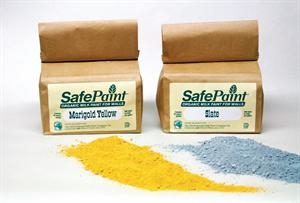
The Old Fashioned Milk Paint Co., Inc. has earned USDA Biobased Certification for its Old Fashioned Milk Paint, the first paint to receive this certification. The USDA Certified Biobased Product Label verifies that the paint’s renewable biobased ingredients meet or exceed USDA standards.
Biobased products are materials composed of agricultural, forestry, or marine materials. Old Fashioned Milk Paint and the company's newest formula, SafePaint for walls, are made from natural materials including milk protein, crushed limestone, clay and earth pigments.
“We are pleased to take part in the USDA’s Biobased Labeling program, and hope it will further set our natural paint apart from the many chemically produced paints currently on the market,” said Anne Thibeau, President.
According to the USDA, consumers can feel secure in the accuracy of the biobased claim and can make better informed purchasing decisions. The USDA is the lead agency for both the voluntary labeling and Federal preferred purchasing programs.
|
|
Our Interview with Maria Rodale |
Maria Rodale is the Chair and CEO of Rodale Inc., a multimedia company focusing on healthy living on a healthy planet. The company includes the nonprofit organic research arm, the Rodale Institute, which has been running what may be the country’s longest side-by-side comparison of organic and chemical growing methods. Rodale’s grandfather, J.I. Rodale, founded Rodale Inc. and is widely known as an organic agriculture pioneer in the US.
Maria has won numerous awards, including the National Audubon Society’s 2004 “Rachel Carson Award” and the United Nations Population Fund’s 2007 “Award for the Health and Dignity of Women.”She is also founding editor of the company’s newest online venture, Rodale.com, which features the latest news and information about healthy living on a healthy planet, as well as her popular blog, mariasfarmcountrykitchen.com.
Green America talked with Maria Rodale about her new book, Organic Manifesto (Rodale Books, 2010), and what it’s going to take to change our food system.
Green America/Tracy Fernandez Rysavy: Your grandfather founded Rodale, and you’ve taken up his mantle and his cause. You also seem to have inherited his very real passion for organics. Where does this passion come from?
Maria: It does come from inside of me, not something I’m forcing on myself. When you’re in a family lineage like this, you have to make a choice—do I want to do this, or don’t I? Nobody should be forced to do anything.
I think for me, it starts from a personal love of food and gardening and my children. I had my first child when I was 20, so I started young. All of our research about organics shows that the most important time when women, in particular, get interested in it is when they get pregnant. You have this immense love for this tiny thing that is dependent on you. For me, that happened when I was 20—so I’m gardening, cooking, learning, and reading, and all of a sudden, I felt like I was just put into the right place.
Tracy: We at Green America get asked by our members all the time, “Which is better, organic or local?” I loved the message in your book that unity in the food movement is vital to creating a healthy food supply.
Maria Rodale: Intellectual debate is hugely important, and the freedom to debate is essential and what is great about America. That freedom to debate means that we also have the freedom to be a vegetarian, a vegan, a meat eater, or the freedom to only eat white food. But that freedom shouldn’t ever be at the expense of poisoning our children and the environment with farm chemicals.
There comes a time when in order to get things done, people have to agree—or agree to agree on major points. There’s enough evidence to know that embracing organic food is the right thing: We’d be a lot healthier, and the planet would be a lot more hospitable to us for a lot longer.
Buying local is good, but organic is great, and local and organic is the ideal.
Tracy: What about people who are concerned that organic farming is becoming “corporate” and “corrupt”?
Maria: I find that attitude disappointing and unrealistic. I personally know Myra Goodman, the cofounder of Earthbound Farm, which is often the target of that kind of criticism. There are very few people who have better intentions and work harder and are doing more good in the environment than Myra. People need to go food shopping. People need business.
I think people who complain about companies like Whole Foods don’t remember what it was like before Whole Foods. Back then, organics certainly weren’t available in every community. And regular supermarkets were often sterile warehouses where the only lettuce was iceberg and tomatoes were like red baseballs. Whole Foods brought organic food to places that had never had much access to it.
What we really need to do is turn around and face the enemy—the chemical industry—together. And while organic standards are good, we must make them better. We must work together to create the best definition of what organic means: social justice and Fair Trade standards, humanely raised and grass-fed animals, and worker rights, and more all make the label more credible. We can make it true.
Tracy: The argument I hear about most when it comes to organic is that we can’t possibly feed the world without conventional chemicals and genetically modified organisms.
Maria: We need to change our paradigm about how to grow food and what food to grow. We’re growing the wrong stuff. You have to change the whole way we think about growing food and farming, and have a more integrated approach. Right now, we grow too much corn and soybean, but it's land that's wasted on food both animals and people shouldn't really eat. Is that that healthy for us and for the planet? NO! Studies from the Rodale Institute Farming Systems Trial show definitively that organic agriculture is just as productive as "conventional" agriculture -- and even more productive in years of drought and flood.
It’s about changing what farming is. You can’t do the same thing without chemicals. You have to change the whole method. We’ll be eating better food, a more diverse diet. Farmers will have more diverse business model. Cows will be happier!
Tracy: You note in your book that organic would even be cheaper than conventional if it weren’t for Farm Bill subsidies.
Maria: It’s true. In an effort to preserve American jobs, the latest version, the 2008 Farm Bill, puts farmers on an economic treadmill by providing payment incentives to keep growing crops like corn and soy chemically. It incentivizes the cultivation of foods that make us sick and fat, yet it bears no responsibility for the costs related to all of us being sick and fat. And ironically chemical farming reduces jobs!
We’re already paying for the health costs and environmental clean-up costs of this chemical use with our taxes.
We’ve also got problems with our health. The US is one of the most developed countries, but we’re not in the top 25 when it comes to longevity and mortality and education. I do believe there’s a connection to the poisoning that’s happening in our food system.
Tracy: What kinds of changes would you like to see in the 2012 Farm Bill?
Maria: I would love to see a huge amount of support for farmers to transition to organic. And a huge reduction of support for commodity, chemical, and biofuel farming, and waste. And tougher regulations on the health—antibiotics and growth hormones and atrazine [an herbicide classified by the EPA as a “likely human carcinogen”] should be banned.
Tracy: Do you have hope that we can get there?
Maria: I do have some hope. But it’s going to take people joining together, and getting really active. I don’t think the chemical companies are laughing, but they are probably feeling kind of smug at the fragmentation in the food movement.
I’ve been thinking about the Civil Rights movement lately. When you think back, for how many years did people argue over slavery and African-American rights? People could have argued forever, but what finally changed things was the groundswell, the marches, the being loud enough that you can’t be ignored anymore. But that takes a kind of courage and boldness. It’s going to take all of us to change our food system. But I do have hope.
Go to DemandOrganic.org for more information. Buy my book and give it to other people, and really get involved in any way that you can. Tap into your own personal passion and embrace diversity and also commit to making positive change. Because it’s going to take all of us.
|
|
Chicago GBN Members Stand Out in NBC’s Top Eco-Preneurs |

NBC Chicago honored the green business leadership of Consolidated Printing, Distant Village Packaging, Reuseit.com, and Uncommon Ground. They made the list of fourteen entrepreneurs and business teams that the network featured for setting a high standard for green business ventures.
Here’s what NBC Chicago said about the GBN members they selected:
Marilyn Jones | Consolidated Printing Company
Marilyn started Consolidated Printing in 1973 in her basement. Thirty-five years later it is a pioneer in green printing, using safe and natural inks, toners, parts washers, solvents, and more. Marilyn and Consolidated Printing have won several awards, both for printing and for environmental prowess, including 3 Governors Pollution Prevention awards. Read the full list on her website.
Rich Cohen | Distant Village Packaging
Rich founded Distant Village in 2000, and has since fostered a successful company that blends sustainability and design by producing handmade packaging and products from natural materials for clients and companies of all sizes. Not only a member of Green America and a winner of many green awards such as "Best Eco-CSR Program of the Year" from the Department of Trade and Industry in the Philippines in 2010 --- Rich and Distant Village also donate to organizations that prioritize the progress and betterment of developing nation communities.
Vincent Cobb | Reusablebags.com / Reuseit.com
When Vincent founded Reusablebags.com he became a leader not only in the reusable bags movement that has flourished since, but in the reusables movement in general. His business now incorporates bags, bottles, and other disposables. Vincent is not only known for being a leader in the reusables movement. His company was actually endorsed by the 2006 film "An Inconvenient Truth." What higher accolade for green products is there?
Michael and Helen Cameron | Uncommon Ground
Michael and Helen have opened Uncommon Ground restaurants in Lakeview and Edgewater. Atop the Edgewater location is the country's first ever Certified Organic Roof Top Farm which boasts fresh, organic produce they use in both restaurants. Their restaurants have been lauded multiple times for being the greenest in Chicago and even in America. Mayor Rahm Emanuel even chimed in, saying, “Uncommon Ground is a great example of what our city can do and what our country can do, use water and energy more efficiently, grow more sustainable food, while boasting the world’s most sustainable businesses."
Also featured:
Greg Christian (Green Festival Speaker) | Beyond Green: Sustainable Food Partners
Beyond Green is trying to modify the entire food industry one institutional kitchen at a time. They consult with kitchens to reduce their energy use and waste while still making delicious and environmentally friendly food.
Will Allen (Green American Magazine featured leader) | Growing Power
By way of Growing Power’s Chicago Projects Office, Chicago has been the humble recipient of a number of Will Allen's flourishing urban farms that are meant to address the issues of food security, nutrition, and public health. Though technically a Milwaukee business, Growing Power’s Chicago Projects Office earned Will an honorary Chicago Ecopreneur title. He was awarded a Macarthur Foundation “Genius Grant” for his work with Growing Power in 2008.
See the full list of eco-preneurs here at NBC Chicago.
|
|
Patagonia Launches Interactive Map of Suppliers |
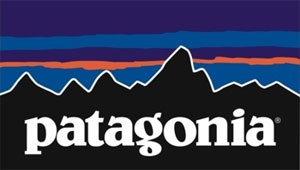
Patagonia, the major active clothing company and a leader in corporate responsibility, has launched an innovative new website to promote supply chain transparency in an easy visual format.
The Footprint Chronicles® examines Patagonia’s life and habits as a company with a global suppliers map. Website visitors can click on any supplier to view location and address information and demographics. Some supplier info also includes history and labor policies.
Patagonia states that the goal of the Footprint Chronicles is “to use transparency about our supply chain to help us reduce our adverse social and environmental impacts – and on an industrial scale. We’ve been in business long enough to know that when we can reduce or eliminate a harm, other businesses will be eager to follow suit.”
Along with the map, Patagonia also features videos about suppliers and a robust reference library that details the company’s practices in social and environmental aspects of materials sourcing.
As a company that provides people with the clothes and gear to explore the outdoors, Patagonia has embraced environmental stewardship as a core principle. The company’s Common Threads Initiative works with consumers to repair, reuse, and recycle damaged or worn out products.
|
|
Clean Energy Victory Bonds |
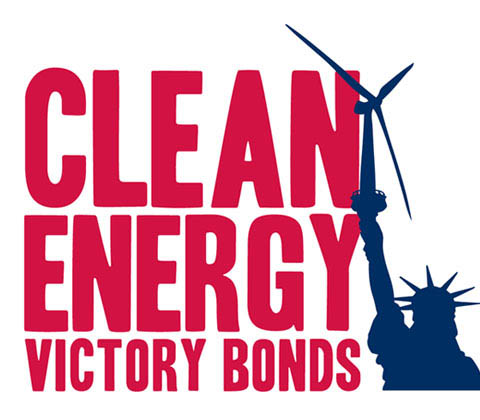 During the First and Second World Wars, the US government sold Victory Bonds in order to finance the costs of war. In the spirit of patriotism and national sacrifice, Victory Bonds generated $185 billion during World War II (over $2 trillion in today’s dollars). They gave ordinary Americans ownership in the efforts of their military overseas and afforded individual and institutional investors access to a low risk/secure asset. During the First and Second World Wars, the US government sold Victory Bonds in order to finance the costs of war. In the spirit of patriotism and national sacrifice, Victory Bonds generated $185 billion during World War II (over $2 trillion in today’s dollars). They gave ordinary Americans ownership in the efforts of their military overseas and afforded individual and institutional investors access to a low risk/secure asset.
In that same spirit of national commitment, many Americans are looking for a way to invest that helps our country address the defining issue of our time – the urgent need for a clean energy economy as the climate crisis intensifies. Now, H.R. 3886, the Clean Energy Victory Bonds Act of 2021, re-introduced by Representatives Zoe Lofgren and Doris Matsui, and Senator Jeff Merkley would authorize the government to issue $50 billion in Clean Energy Victory Bonds (CEVBS).
For as little as $25, all Americans could purchase these Treasury bonds that support solar, wind, geothermal, second generation biofuels (switch grass and agricultural waste), electric vehicles, energy efficiency.
Top 10 Benefits of Clean Energy Victory Bonds
-
Over 1 Million New Jobs: The $50 billion raised by CEVBs can be leveraged to provide a full $150 billion in investment in clean energy technology. Research shows that total investments of $150 billion in clean energy can create at least 1 million competitively-paying jobs, significantly reducing the unemployment rate.
-
Not a Tax: CEVBs would not require any new taxes on individuals or corporations. Instead, CEVBs represent an investment opportunity that individuals and institutions will choose to support.
-
Energy Security: Reduce U.S. dependence on foreign sources of energy, enhancing national security.
-
Consumer Savings: Clean energy solutions will lower utility bills since clean energy sources are free of the volatility and price increases of fossil fuels. When clean energy solutions are paired with energy efficiency, consumers will see a decrease in energy costs.
-
A Safe Investment: Investors will be purchasing US Treasury Bonds. Backed by the full faith and credit of the US Government, investors will earn back their full investment plus interest.
-
Grow US Businesses: Support the growth of American businesses in the clean energy sector, and help them become more competitive globally.
-
Health Benefits: Protect the health and safety of Americans by reducing local air and water pollution throughout the country. Clean energy will significantly reduce deaths from heart attacks, lung diseases and asthma, and reduce birth defects from mercury poisoning.
-
Grow the US Economy: Will bring money into the American economy through foreign exports as demand for clean energy around the world increases.
-
Clean Energy Protects the Economy: Clean energy relies on limitless sources like sun, wind and geothermal, which in turn will limit jolts to the US economy from energy price increases. Currently, the economy is at the mercy of price increases for fossil fuel resources (especially oil), and the price of oil will only go up as we deplete reserves.
- Competitive Advantage: Clean energy technologies will be the growth sector for the next century. The U.S. can become the leading producer and exporter of advanced energy technologies and ensure our economic competitiveness for generations.
The Clean Energy Victory Bonds Act Going Forward
With a new administration in the White House and a renewed interest in funding infrastructure and clean energy in the US, the time is now to push for the enactment of Clean Energy Victory Bonds legislation.
Green America will work with its allies and supporters to promote Clean Energy Victory Bonds and build support in the House ad Senate.
*Thanks to all the organizations that support Clean Energy Victory Bonds: 350.org, American Sustainable Business Council, Center for American Progress, ConservAmerica, Ceres, Calvert Investments, The Change, Clean Edge, Clean Yield, Cleantech Institute, Climate Bonds Initiative, Ethical Markets, LLC, Franciscan Action Network, Green Choice Bank, Green for All, GreenandProfitable.com, Kansas Energy Information Network, Kenergy Solar, EcoOptions, Ltd, Lazarus Financial Planning, Natural Investments, New Resource Bank, New Voice of Business, Pax World Funds, Rural Renewable Energy Alliance, Self Help Credit Union, Union of Concerned Scientists, and National Wildlife Federation.
|
|
Shareholders: Time to Take Action |

It's shareholder action season, a time when shareholders are invited to provide direction for the companies through the proxy-voting process. Check out these resources to help you cast your votes.
It's shareholder action season, a time when shareholders are invited to provide direction for the companies through the proxy-voting process. If you own shares in a corporation, you can vote directly to let management know how you want them to run the company.
Green America's proxy ballot recommendations can help to guide your voting. We've reviewed 72 separate shareholder resolutions and made voting recommendations on issues like climate change, recycling, toxins in everyday products, corporate political spending, and executive compensation.
We've also teamed up with Moxy Vote, the free online proxy-voting platformthat allows shareholders to vote their proxy ballots easily and electronically. We've organized our recommendations into charts on our Web site which will link through to MoxyVote for voting as the proxy ballots become available during the spring and summer.
Take a look at all our recommendations on shareholder resolutions here. Opportunities include a vote in April on responsible lending at Citigroup, nuclear power at GE and political spending at Hershey's. Get links to actions you can take for a greener economy, whether or not you own shares.
Plus: Get this new shareholder resource from As You Sow. The 2012 Proxy Preview is available as a free PDF– and outlines the latest developments in the 2012 shareholder season. This is a “must read” for anyone tracking and involved in shareholder initiatives to promote corporate responsibility and transparency. Learn about upcoming shareholder resolutions and key trends in shareholder activism!
See As You Sow's 2012 Proxy Preview.
|
|
Guide to Fair Trade |
|
|
Documentary Shows Consequences of Nestlé’s Bottled Water Domination |
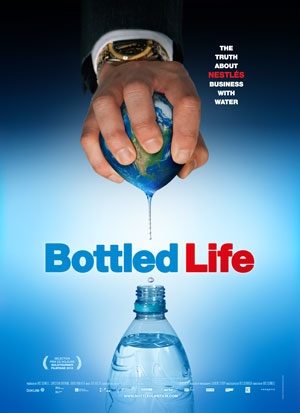
A new documentary film investigates how Nestlé turned ordinary water into a billion-dollar business. The film examines how the Swiss food and beverage corporation feeds their industry dominance in bottled water, and how their commoditization of the vital resource devastates impoverished communities.
In the film Bottled Life, Swiss journalist Res Gehringer explores Nestlé’s practices in rural Maine, Nigeria, and Pakistan, showing the impacts on communities when Nestlé takes control of the water supply. The $65 billion company drains groundwater, forcing local residents to dig far deeper for any non-polluted water that remains or pay Nestlé’s high price to get their water back.
Since acquiring Perrier, Poland Spring, San Pellegrino and numerous other bottled water brands, Nestle has consolidated global power over the bottled water industry. The company’s Pure Life brand is the top-selling bottled water brand internationally. Nestlé refused to cooperate with the film, though CEO Peter Brabeck was filmed in a previous documentary describing the notion of access to water as a basic human right as “extreme” and arguing that water ought to have a market value.
Nestlé, Coke, and Pepsi enter regions with strong political ties to regulators that allow them to control both community water supplies and bottled water markets, according to Corporate Accountability International’s campaign against bottled water. They damage public infrastructure, the environment, and the health of communities without consequence, ignoring widespread local dissent. Nestlé is also historically known for controversy over endangering babies and undermining breast feeding mothers by pushing its infant formula in developing countries.
Watch the Bottled Life trailer:
|
|
Interview with Ikea's Chief Sustainability Officer |

A year ago, Steve Howard, founder and CEO of The Climate Group, became the chief sustainability officer (CSO) at Ikea, the $32 billion Swedish home-furnishings giant. In an interview with GreenBiz.com, Howard describes how he is working to be an aggressive force for change.
 “When I met with Ikea's CEO Mikael Ohlsson, I said, ‘If you're interested in being incrementally less bad, I'm the wrong guy. If you're interested in transformational, I'm in,’” Howard described the meeting that landed him the job. “When I met with Ikea's CEO Mikael Ohlsson, I said, ‘If you're interested in being incrementally less bad, I'm the wrong guy. If you're interested in transformational, I'm in,’” Howard described the meeting that landed him the job.
Ikea is on the verge of releasing their 2011 sustainability report, which will reflect Howard’s goal that by 2015, all of the company’s products will be renewably sourced and designed for recyclability.
Read more about how Howard plans to make Ikea a leader in the “circular economy” and make sustainable products affordable to millions in the interview at GreenBiz.com.
|
|
Organic Cotton T-Shirts Made in North Carolina |
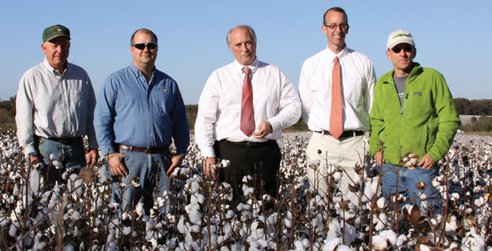
TS Designs has released one of the most sustainable t-shirts available, made from 100% North-Carolina-grown certified organic cotton. Customizable shirts are available now for purchase.
 TS Designs has released one of the most sustainable t-shirts available, made from 100% North-Carolina-grown certified organic cotton. Customizable shirts are available now for purchase from the limited first run. TS Designs has released one of the most sustainable t-shirts available, made from 100% North-Carolina-grown certified organic cotton. Customizable shirts are available now for purchase from the limited first run.
Eric Henry, President of TS Designs and Green America board member spoke about the innovation, “Being pure organic cotton from a local supply chain, these shirts truly support the mission of your organization or company, and in doing so, support jobs right here in the US.”
Features of the new t-shirt include cotton produced and harvested in North Carolina without any harmful pesticides. The cotton will travel only 900 miles from dirt to shirt and each shirt can be transparently tracked online from the farm to the printer and every supplier along the way.
The local suppliers employ over 700 workers in North Carolina and the printing is done in the leading sustainable printing process.
There will be a limited run of 5,000 t-shirts, with orders first-come, first-served.
To order: Contact sales@tsdesigns.com for a detailed quote.
“The journey of growing organic cotton in North Carolina began about five years ago when we were told it couldn’t be done,” said Henry. “We started by making T-shirts from cotton grown in the state with a line called Cotton of the Carolinas, knowing that eventually we could do the same thing with certified organic cotton grown here.”
TS Designs and their partner Mortex Apparel built the Cotton of the Carolinas brand through supporting local jobs and creating an entirely transparent supply chain, all while overcoming many challenges to make local organic cotton a reality.
“Conventional textile wisdom says you can’t create an apparel line from one farm, but we did it,” said Brian Morrell, President of Mortex Apparel. “This organic cotton harvest is the next milestone and represents significant opportunity in bringing a positive impact to both jobs and the environment in our state.”
Watch this video to learn more.
|
|
Cooperatives Revitalize Communities in Need |

In an ongoing recession that has been difficult for many parts of the country, Cleveland, OH, has had the dubious distinction of being the second most impoverished city in the nation, after Detroit. Census numbers from 2010 indicate that one of every three Cleveland residents lives below the poverty line, and the unemployment rate was hovering over nine percent this summer.
But Cleveland is determined to turn itself around, and it’s now gaining attention for its innovative and successful approach to community economic development. Cleveland is home to the Evergreen Cooperative Corporation (ECC), a network of worker-owned cooperatives built to meet the supply and service needs of local businesses, government offices, and organizations while building wealth and assets within the community.
The city was ready to take part in the Evergreen experiment, having been burned in the past by the conventional ways of bringing business to the city.
“We used to offer all kinds of tax abatements and other incentives to get businesses to move here, but then after a few years, another city would offer other encouragements and many would move away,” says Tracey Nichols of Cleveland’s Department of Economic Development. “Instead of pursuing that model, we want to work on building a healthy economic environment that will endure.”
Bringing Jobs and Money Back
Evergreen was formed in 2008 after the Cleveland Foundation brought together over 40 stakeholders to establish a vision for the revitalization of Cleveland’s Greater University Circle (GUC) region, which includes the city’s university and hospital districts, as well as six residential neighborhoods. The GUC included working-class and impoverished areas with little employment opportunity, despite the fact that they surround some of Cleveland’s largest institutions.
The group realized that local “anchor institutions”—like hospitals and universities— spend $3 billion on goods and services each year. What if they could keep that $3 billion in Cleveland, they asked, and leverage it to benefit the community?
The institutions, it turned out, were eager to source more of their needs locally.
“Evergreen worked closely with its anchor partners to identify supply chain [needs] they might have that an Evergreen company could address,” says Ted Howard, executive director of the Democracy Collaborative, one of the organizing forces of Evergreen. “In a real sense, you could say that we are co-designing businesses with these institutions, who then become Evergreen’s customers.”
But just creating jobs for Cleveland wasn’t enough, says Atlee McFellin, also of the Democracy Collaborative. “Instead, we wanted a model that gave people an ownership stake in what they were doing. We looked at models that had been proven to work in creating jobs and building wealth, and decided that Cleveland was ripe for worker-owned business.”
Green Jobs and More
With grant funding and technical support from the Cleveland Foundation and others, the group created the Evergreen Cooperative Corporation to establish a network of cooperatives to meet the needs of GUC’s anchor institutions and bring jobs and money back to the city. Evergreen launched its two first cooperatives in the fall of 2009: Evergreen Laundry and Evergreen Energy Solutions, also known as the Ohio Cooperative Solar.

Evergreen Energy Solutions.
Evergreen Cooperative Laundry, an industrial-scale green laundry operating out
of a LEED-certified building, does millions of pounds of laundry each week for Cleveland hospitals and hotels. Evergreen Energy Solutions, a solar installation and energy efficiency company, helps local governments utilize federal grant money for renewable energy and efficiency projects, and it also works in the residential arena. So far, Evergreen Energy Solutions has installed over three megawatts of solar energy, and the co-op’s presence in Ohio is expected to double the amount of solar installed in the state in coming years.
A third Evergreen co-op, Green City Growers Cooperative, constructed a hydroponic greenhouse and is expecting its first harvest this winter. Responding to calls from local universities and hospitals for more local food, Green City Growers will grow and package about 3 million heads of leafy greens every year, as well as some 300,000 pounds of fresh herbs.
In the Evergreen model, employees become worker-owners after six successful monthsof employment. At that point, the employee is eligible for no-cost health care benefits and a raise, part of which goes towards buying the employee’s ownership stake in the company. Evergreen worker-owners earn a living wage of almost twice the Ohio minimum wage. And each year, the company’s surplus profits are allocated to capital accounts owned by each worker.
“Rather than a trickle-down, Walmartstyle strategy, Evergreen focuses on economic inclusion and building a local economy from the ground up,” says Howard. “Rather than offering public subsidies to induce corporations to bring what are often low-wage jobs into the city, the Evergreen strategy is catalyzing new businesses that are owned by their employees. Rather than concentrate on workforce training for employment opportunities that are largely unavailable to low-skill and low-income workers, the Evergreen Initiative first creates the jobs, and then recruits and trains local residents to take them.”
Making an Impact
So far, the three Evergreen co-ops have over 50 worker-owners, and planners expect to form a total of six to ten cooperatives with hundreds of workerowners. While owning a stake in the business means more profits are returning to the employees, Evergreen co-ops are also managed democratically, giving each worker-owner a voice in decision making.
“I love telling people what I do for Evergreen, and what it does for me,” says Medrick Addison, a worker-owner at Evergreen Laundry. “You grow, you nurture, you are instrumental in what the co-op becomes—that’s the difference in working at Evergreen versus somewhere else.”
While Cleveland has grabbed headlines in the past for its dismal economy, leaders from cities across the country are now traveling there to see the Evergreen model in action. Two cooperatives in Atlanta are forming under the Atlanta Wealth Building Initiative, and feasibility studies are under way in Washington, DC; Pittsburgh; and Amarillo; with more cities expressing interest in worker co-ops.
“People see Evergreen, and they want it in their own city,” says McFellin. “We are working to create networks of cooperatives like these around the country, taking steps towards a new economy.”
For a toolkit on how to replicate the Evergreen
model, visit evergreencooperatives.com. |
|
5 Ways to Put an Eco-Twist on Tradition |
From chestnuts roasting over open fires (spewing fine
particulate matter) and brightly wrapped presents (adorned
with paper from virgin rainforest trees), holiday practices
aren’t always green.
1. HOLIDAY LIGHTS -- LED holiday lights use up to 80 percent less energy than incandescent lights, and they’ll last longer, so they’re worth the splurge.
Go one better with solar holiday lights, which use only the energy they soak up from the sun. They’ll save you energy, save on your electric bill, and eliminate the need for extension cords. Gardener’s Supply (gardeners.com)
and MrLight.com sell solar LED lights ($25 and up) that can help you get into the holiday spirit without depending on fossil fuels.
As for those old incandescent lights lurking in your attic or basement, recycle them at Home Depot stores (annually from early- to mid-November) or at HolidayLEDs.com.
2. DECORATIONS -- Rather than buying new decorations, scour thrift shops and garage sales, as well as places like Craigslist.com or Freecycle.org for used ornaments and holiday decor. You can also make your own decorations. One Green America member pastes her family’s annual holiday photo to recycled card stock and hangs it from the tree every year. You can do the same with pretty images cut from last year’s holiday cards, if you need to fill in a few gaps on your tree.
If you do buy new decorations, make them Fair Trade so you can ensure the workers who made them earned a living wage and didn’t labor under sweatshop conditions. See the “Fair Trade” category at GreenPages.org to find businesses—like Ten Thousand Villages (tenthousandvillages.com) and SERRV International (serrv.org) that sell Fair Trade holiday decor.
![ornaments[1]](/sites/default/files/inline-images/ornaments%5B1%5D.jpg) 
Homemade ornaments by artist Willow Polson: “I couldn’t bear the thought of throwing away so many beautiful cards after just one use. By recycling them into colorful ornaments, people can enjoy them forever.”Fabric "furoshiki" wrapping.
3. CARDS -- If you can, send e-cards to save resources and shipping impacts. Otherwise, send cards made from 100-percent post-consumer recycled content, such as those offered by AmberLotus.com, GoodPaper.com, and SyracuseCulturalWorkers.com. In addition, the Greenfield Paper Co. sells Grow-A-Note and Chia cards embedded with seeds that you can plant, as well as hemp cards and cards made from 100-percent junk mail.
4. GIFT WRAP -- Much of the holiday waste we generate comes from gift wrap and ribbons, which are often made from virgin-pulp paper and are generally used only once. Even worse, plastic ribbons and shiny foil giftwrap are rarely recyclable. Save resources by choosing sustainable wrappings when you do buy presents, from reusable tins to used boxes wrapped in newspaper comics. If you’ve got some pretty fabric scraps or old scarves around, try your hand at “furoshiki,” the Japanese method of wrapping boxes with carefully folded cloths. Japan’s Ministry of the Environment has how-to directions at env.go.jp/en/focus/attach/060403-5.html/.
Another option are reusable shopping bags—especially great for nudging friends and family who don’t already take their own bags to the store. ChicoBag.com offers special holiday-themed shopping bags that collapse down to the size of two golf balls.
5. THE YULE LOG -- OK, so maybe this tradition isn’t widely practiced anymore, but home fires in the fireplace are a common winter pleasure. Sadly, fireplaces produce air pollution, including fine particulate matter and carbon monoxide. Reduce emissions up to 80 percent from your fireplace with a Duraflame log or Java-Log, which are petroleum-free and made from compressed sawdust and plant-based waxes. If you want a fire in your fireplace, the Environmental Protection Agency (EPA) recommends burning these manufactured logs over wood because they substantially reduce air pollutants. Since much of the heat from your fireplace goes up the chimney rather than into your home, fireplaces aren’t very efficient heaters, either. An EPAcertified fireplace insert, which is basically a wood stove that fits snugly in the fireplace cavity, will improve efficiency, though they can cost up to $3,000. |
|
Break Up With Your Mega-Bank |
When you put your money into your checking or savings account, you might imagine it stacked up inside a giant, Hollywood-style walk-in safe, patiently waiting for you to spend it. But your money doesn't just sit there, your bank puts it to work in the world.
And if you have your accounts with a mega-bank like Citigroup, Bank of America, or Wells Fargo, you might not like what your money is doing. Our latest Green American gives you the tools to kick your mega-bank — and all of its predatory, unsustainable practices — to the curb. |
|
What is Fair Trade? Labeling and Certification Changes |
Ever ask yourself, what is fair trade? Well now, the terrain is changing. On September 15, Fair Trade USA (FTUSA), the United States’ labeling body for fair trade certified products announced that it would be leaving Fairtrade International (FLO), the international fair trade system. Previously, certification for fair trade has always happened under FLO, which includes a network of 19 national labeling initiatives around the world
Fair Trade USA cites several reasons for this decision, including its desire to certify coffee grown on plantations as fair trade. (Historically only farmers organized into cooperatives could be considered as Fair Trade coffee producers). FTUSA also stated that it sent nearly $2 million a year to FLO in membership fees which FTUSA felt it could put to better use in on US-based marketing initiatives. Ultimately, it comes down to the fact that FTUSA feels its vision, which it calls “Fair Trade for All”, is significantly different from the existing international Fair Trade model. Fair Trade USA is soliciting comments on its new standard for hired labor to be used for coffee plantations until January 31, 2012. Comments may be sent to standards@fairtradeusa.org
At this point, it’s unclear what the impact of these changes and proposed new standards will have on producers, though there is concern that the pursuit of increased volume will lead to a watering down of the standards, and perhaps less impact on small farmers’ livelihoods. One thing that is clear is that these changes will not make it any easier for consumers to navigate the world of fair trade, and in fact, the already cluttered world of ethical labels is about to get even more confusing.
 Fair Trade USA has announced that it will be moving to a new label for fair trade certified products (shown left). You will see this label when a product is 95% or more Fair Trade certified. You will see an “ingredients” label (shown right) when a product has numerous ingredients and is at least 20% Fair Trade certified ingredients by dry weight. Fair Trade USA has announced that it will be moving to a new label for fair trade certified products (shown left). You will see this label when a product is 95% or more Fair Trade certified. You will see an “ingredients” label (shown right) when a product has numerous ingredients and is at least 20% Fair Trade certified ingredients by dry weight.
 You will also likely begin to see this label (left) on the packaging of some of our favorite fair trade products. This is the International Fair Trade Mark, used in fair trade importing countries in Europe, as well as Canada and Australia. This label is used to identify fair trade products, from 20% -100% certified, by dry weight, though actual requirements vary by country. Companies that sell fair trade products in the US that wish to remain part of the international system will likely earn their certification through Fairtrade Canada and use this label. You will also likely begin to see this label (left) on the packaging of some of our favorite fair trade products. This is the International Fair Trade Mark, used in fair trade importing countries in Europe, as well as Canada and Australia. This label is used to identify fair trade products, from 20% -100% certified, by dry weight, though actual requirements vary by country. Companies that sell fair trade products in the US that wish to remain part of the international system will likely earn their certification through Fairtrade Canada and use this label.
 While on the subject of labels, we should also mention the IMO Fair For Life certification system, which launched about five years ago. This label is often found on products that do not have written standards in the FLO system. Also, some companies, for various reasons, have chosen to use IMO as an alternative certifier to Fair Trade USA for products that Fair Trade USA currently certifies. While on the subject of labels, we should also mention the IMO Fair For Life certification system, which launched about five years ago. This label is often found on products that do not have written standards in the FLO system. Also, some companies, for various reasons, have chosen to use IMO as an alternative certifier to Fair Trade USA for products that Fair Trade USA currently certifies.
Now companies who want to sell fair trade certified products to consumers in the US will have three certification bodies to choose from. And consumers will have three more labels to decipher, on top of the estimated 424 ethical labels that are now on products, according to Ecolabel Index.
The proliferation of “ethical labels” in fair trade, and otherwise, can be viewed through two lenses. On the one hand, it’s promising to learn that an increasing number of consumers are seeking ethically produced products and that the market has responded by developing more certifications; and that more and more companies are using such labels to verify the “goodness” of their products. On the other hand, with so many certifications to research and police, it’s likely that not all of them are as rigorous as they could be, and certainly not as rigorous as a conscientious consumer would hope when seeking out responsibly made products.
Until there is a certifier of certifiers, so to speak, or until the market weeds out the greenwashing labels, consumers who want to ensure their purchasing decisions support fair labor practices will have to do a bit of research, beyond simply trusting a label. In the fair trade world, for the meantime, this means looking beyond the label to the companies themselves. What is the mission? What are the company’s operating practices? What do they pay their workers? Do they seek out long-term relationships with their producers? Of course, the companies that have helped pioneer Fair Trade practices and areleaders in promoting Fair Trade products to US consumers are good choices. A partial list of these companies includes Ten Thousand Villages, Serrv, Equal Exchange, Divine Chocolate, and many other leaders you will find listed in our Green Pages.
While time consuming, it’s completely acceptable for a consumer to reach out to a company and ask how and where their products are made. If the company won’t or can’t answer these questions, there’s a good chance the product is not as ethical as any label may claim.
 If you are short on time and can’t do this type of research for every product you buy (who can?) you can rely on Green America for providing the information you need to make good choices. We’ll keep you up to date on the evolving fair trade market and you can turn to the businesses that have earned the Green America Seal of Approval. Our standards are recognized as being among the most holistic in the marketplace, as we look for social, worker, community and environmental responsibility. Look for companies with the Green America Seal of Approval. If you are short on time and can’t do this type of research for every product you buy (who can?) you can rely on Green America for providing the information you need to make good choices. We’ll keep you up to date on the evolving fair trade market and you can turn to the businesses that have earned the Green America Seal of Approval. Our standards are recognized as being among the most holistic in the marketplace, as we look for social, worker, community and environmental responsibility. Look for companies with the Green America Seal of Approval.
For now, we are recommending that it is better to support products and companies that use any of the fair trade labels discussed above over products and companies that have failed to make a commitment to fair trade at any level, but also to look beyond the label and at the practices of the whole company.
To learn more about the changes in fair trade you can read these articles in the New York Times, the Washington Post, and the Seattle Times. They do a good job at presenting the various concerns in the movement.
We promise to keep you up to date as the changes with in the world of fair trade shake out and help you to ensure your dollars are doing the most good for farmers and artisans worldwide. You can receive updates from us here or in your inbox by signing up for our e-Newsletter.
|
|
Green Tuesday: A New Tradition for Green Holiday Shoppers |
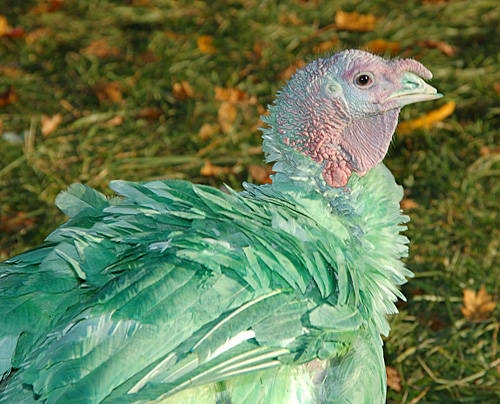
This holiday shopping season, Green Tuesday connects businesses to holiday shoppers who want to save and be greener. Green America launched Green Tuesday, a new tradition to make the Tuesday after every Thanksgiving a green shopping day.
Green Tuesday marks the start of a holiday season that supports local, green, and fair trade purchases for the holidays.
To kick off this new annual holiday shopping tradition, Green America’s GreenDeals.org website offered special deals for the week. The first Green Tuesday brought national media coverage and a boost for green businesses.
Much like Groupon does for general shoppers, GreenDeals.org offers discounts and deals from local and national green online businesses that are approved by Green America. GreenDeals.org features a new deal or discount every 24-48 hours.
"Mass culture encourages people to run out of their house, now at midnight, and go shopping," says Todd Larsen, Green America Corporate Responsibility Director. "Why not wait another day or more and buy something that helps others Green Deals makes it possible to give great gifts for the holidays, while also giving back to the planet.”
Products and coupons ranging from 30-50 percent off were featured from November 29 - December 6, from businesses including From War to Peace, Back to the Roots, Driwater, Organic Essence Lip Balm, Better World Club, and Indigenous Designs Clothing.
Since its launch one year ago, GreenDeals.org has acquired over 160,000 green members and has featured over 150 deals from green businesses. Find out how to advertise.
|
|
Safe Cosmetics Companies Fulfill Products Pledge |

The Campaign for Safe Cosmetics announced today that 321 cosmetics companies have shown leadership in avoiding toxins and fully disclosing product ingredients, including many of our members.
The Campaign for Safe Cosmetics announced today that 321 cosmetics companies have met the goals of the Compact for Safe Cosmetics, the Campaign’s voluntary pledge to avoid chemicals banned by health agencies outside the U.S. and to fully disclose product ingredients – a pioneering practice in the cosmetics industry.
An additional 111 companies made significant progress toward the goals of the Compact. Read all about it and see the full list of companies in the new report, Market Shift.
Market Shift: The story of the Compact for Safe Cosmetics and the growth in demand for safe cosmetics, describes the seven-year project during which the Campaign worked with companies in a unique partnership to raise the bar for safer personal care products. Download the report.
“These companies have truly broken the mold. They are leading the cosmetics industry toward safety, showing it’s possible to make products with full transparency and without using hazardous chemicals,” said Janet Nudelman, program director of the Breast Cancer Fund, a founding member of the Campaign for Safe Cosmetics.
More than 1,500 companies signed the Compact from its inception in 2004 until August 2011, when the Campaign for Safe Cosmetics closed the Compact project. The research team at Environmental Working Group’s Skin Deep database developed tools for tracking each company’s compliance with the goals of the Compact. The report describes how these companies – from small mom-and-pop businesses to some of the largest businesses in the natural products sector – are setting a new high-bar standard for personal care products.
Green America is one of nearly 150 organizations that have endorsed the Campaign for Safe Cosmetics Platform, indicating support for the Campaign’s goal: government regulation over to the cosmetics industry and safer personal care products for people and the planet.
Green Business Network members that endorsed the Campaign include :
Aguacate & Co.
Alima Pure
Aubrey Organics, Inc.
BabyBearShop
Body Sense LLC
Botanical Earth
Brittanie's Thyme LLC
Creating Harmony LLC
derma e Natural Bodycare
Dr. Bronner's Magic Soaps
Dropwise Essentials
Earth Mama Angel Baby
Elemental Herbs
Essance, LLC
Garden of Eve's Natural Organic Skin Care
Golden Earth
Golden Path Alchemy, LLC
Good Clean Love, Inc.
Gourmet Body Treats
Herbaliz, LLC
Herban Lifestyle
Intelligent Nutrients
Just Goods
Kimberly Parry Organics
Max Green Alchemy, Ltd.
Mixaroma, Inc.
MuLondon
My Mama's Love
NovAurora Organic Skin Care
Nurture My Body
Pharmacopia Bodycare
Pomega5
Purple Prairie Botanicals
Rare Natural Care, Inc.
Rosemira Organics
Soap for Goodness Sake
Sound Earth
TerrEssentials
W.S. Badger Company
Yoreganics
Zosimos Botanicals, LLC
Get involved: Sign the Business Letter in support of the Safe Cosmetics Act of 2011. Learn more through our resource guide and webinar.
|
|
Plastic Sundays: Watch “Bag It” Online |

Those of you who've read through our "Take the Plastic Challenge" Green American have undoubtedly seen several references to the documentary film Bag It inside. In fact, it was this film that coined the term "stupid plastic," which we've adopted freely here at Green America to describe the type of single-use, unnecessary plastic that we'd like to see wiped off the planet.
The film takes an in-depth look at plastic bags and other types of stupid plastic in use today--from production to distribution to disposal (which usually means "dumped in the ocean"). You'd think that would make it one of the most depressing documentaries in existence, and yet, somehow, the film manages to be empowering and even entertaining, while treating its subject matter with the seriousness it deserves. You'll laugh, you'll learn something, and you'll come away wanting to do more to get the stupid plastic out of our lives.
For the next four Sundays, you can watch Bag It online for only $4.99 at Constellation TV, a new online movie theater that allows you to interact with the entire audience via your computer.
- Watch this Sunday, Nov. 27th, at 8:30 p.m. Afterwards, world-reknowned musician Jack Johnson and his wife Kim will host a live Q&A. Proceeds from this screening will benefit the Kokua Hawai'i Foundation, cofounded by the Johnsons, which supports environmental education in Hawai'i.
- On Sunday, Dec. 4th, at 8:00 p.m., Surfrider Foundation founder and CEO Jim Moriarty will host a screening and live Q&A. Proceeds will support the Surfrider Foundation, which works to protect the world's oceans.
- On Sunday, Dec. 11th at 8:30 p.m., Rebecca Sutton of the Environmental Working Group (EWG) will host a screening and live Q&A. Proceeds will benefit EWG's programs to protect public health and the environment.
- On Sunday, Dec. 18th at 8:30 p.m., Anna Cummins and Marcus Erickson of 5 Gyres will host a screening and live Q&A. Proceeds will benefit 5 Gyres, which is dedicated to stopping the flow of plastics into the oceans.
About Constellation: Just like a traditional theater, audiences purchase tickets to attend scheduled show times of films on Constellation. Unlike other online platforms, watching movies on Constellation is a social experience. Users pick a show time to attend, invite friends, and watch movies together! Movies are presented by VIP hosts, such as the films' directors, actors, or subject experts, who appear live in the online theater to answer questions from the audience during and after the film.
.
To learn more about Constellation TV, visit Constellation.tv. To learn more about the Bag It screenings, visit Constellation.tv/bagit.
If you can't make one of the Sunday online screenings, you can also purchase the film on DVD to share with your community group, school, or house of worship. Visit the Bag It website for ordering information and to download a free screening kit.
|
|
Kick off the First Green Tuesday |
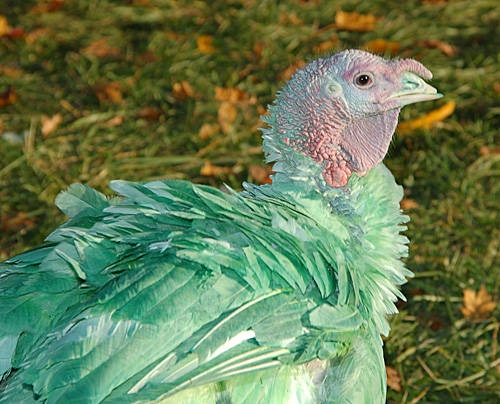
Move over, “Black Friday” and “Cyber Monday” -- make room for “Green Tuesday!” Green America is proud to begin a new tradition that makes the Tuesday after every Thanksgiving a green shopping day. Get connected to holiday shoppers who want to save and be greener.
To kick off this new annual holiday shopping tradition, Green America’s GreenDeals.org website will be offering special deals for the week starting on the first “Green Tuesday,” November 29, 2011.
Much like Groupon does for general shoppers, GreenDeals.org offers discounts and deals from local and national green online businesses that are approved by Green America. GreenDeals.org features a new deal or discount every 24-48 hours.
Examples of special deals to be offered during the first “Green Tuesday” week include products and services, such as:
A total of 15-20 products and coupons ranging from 30-50 percent off will be featured from November 29 - December 6. Additional “side deals” for 10-20 percent off also will be featured on GreenDeals.org web pages. Daily contests and special GreenDeals.org credits will go up on the GreenDeals.org Facebook page.
“Green Deals makes it possible to give great gifts for the holidays, while also giving back to the planet. Many consumers who are turned off by shopping at big-box stores during the holiday season will welcome this opportunity to participate in a way that is in line with their values, and save money at the same time,” says Green America Corporate Responsibility Director, Todd Larsen.
Since its launch one year ago, GreenDeals.org has acquired over 160,000 green members and has featured over 150 deals from green businesses.
Thinking about becoming a part of "Green Tuesday?" Consider the research:
- 80% of consumers are likely to switch brands, similar in price and quality, to one that supports a cause. (See Cone 2010 Cause Evolution Study)
- 54% of shoppers say they consider elements of sustainability, such as sourcing, manufacturing, packaging, distribution, product use and disposal, as they select products and stores. (GMA/Deloitte Green Shopper Study, 2009)
- In 2009, 47% of consumers said they bought products from a socially or environmentally responsible company. Going into 2010, 76% of all consumers said they expected to purchase more from environmentally responsible companies. (Tiller, 2009)
- 92% of mothers want to buy a product supporting a cause. They are also more likely to switch brands and have purchased more cause-related products in the past year than any other demographic. (Cone 2010 Cause Evolution Study)
- 88% of women say they like brands that “allow me to do something good.” (“Women, Power & Money: The Shift to the Female-Driven Economy,” Fleishman-Hillard/Harrison Group, 2010)
- 76% of Millennials want brands to be ecologically conscious. (Generate Insight, 2009).
Here's how you can get in touch with GreenDeals to participate in Green Tuesday.
In addition to the green products and services offered on GreenDeals.org, holiday shoppers can find great green purchases at GreenPages.org, the nation’s leading directory of green products and services which features thousands of businesses nationwide, and from Green America’s Holiday Green Gift Guide which features great deals on green products.
Happy Thanksgiving and happy green holiday shopping from Green Festival, Green America and GreenDeals.org!
|
|
Scaling Up Your Green Business |
Get tools to determine how your want your business to grow and how to create that growth.
C.J. Hayden provides tools to help determine how you want your business to grow and how to create that growth, including:
- Taking a look at the mission of your business.
- Who you want to serve.
- Some of the ways you might scale up your business.
- Where to look for new customers, new products, and new team members.
- The role of marketing in your growth.
About C.J. Hayden
 Since 1992, C.J. has helped hundreds of entrepreneurs and independent professionals launch and sustain successful enterprises, serving as an entrepreneurship coach and trainer. She is also the author of three books and over 400 articles on marketing, entrepreneurship, life purpose, and social change. Her bestselling book Get Clients Now! A 28-Day Marketing Program for Professionals, Consultants and Coaches has become the marketing bible for thousands of independent professionals. C.J. is also the author of The One-Person Marketing Plan Workbook, co-author of Get Hired Now! A 28-Day Program for Finding the Job You Want, and a contributing author to Guerrilla Marketing on the Front Lines. Since 1992, C.J. has helped hundreds of entrepreneurs and independent professionals launch and sustain successful enterprises, serving as an entrepreneurship coach and trainer. She is also the author of three books and over 400 articles on marketing, entrepreneurship, life purpose, and social change. Her bestselling book Get Clients Now! A 28-Day Marketing Program for Professionals, Consultants and Coaches has become the marketing bible for thousands of independent professionals. C.J. is also the author of The One-Person Marketing Plan Workbook, co-author of Get Hired Now! A 28-Day Program for Finding the Job You Want, and a contributing author to Guerrilla Marketing on the Front Lines.
|
|
Ben & Jerry’s Declares Support of Occupy Wall Street |

Occupy Wall Street has grown into a movement that has spread throughout the country and around the world. Ben & Jerry’s, producers of ice cream with a social mission, have announced their support. Read their statement.
In the course of a month, Occupy Wall Street has evolved from a handful of protesters taking over a small piece of New York’s financial district to a movement that has spread throughout the country and around the world. Ben & Jerry’s, producers of ice cream with a social mission, have announced their support for the growing movement.
The Occupy Wall Street movement is becoming a force to be reckoned with, targeting the 1% of people in America who control the vast majority of wealth while the remaining 99% shoulder the burdens of a struggling economy. Read Green America's statement of support.
With one of their well-known cows raising an “Occupy” sign in solidarity on their website (pictured), Ben & Jerry’s showed their support with the following statement:
----
We, the Ben & Jerry's Board of Directors, compelled by our personal convictions and our Company’s mission and values, wish to express our deepest admiration to all of you who have initiated the non-violent Occupy Wall Street Movement and to those around the country who have joined in solidarity. The issues raised are of fundamental importance to all of us. These include :
- The inequity that exists between classes in our country is simply immoral.
- We are in an unemployment crisis. Almost 14 million people are unemployed. Nearly 20% of African American men are unemployed. Over 25% of our nation’s youth are unemployed.
- Many workers who have jobs have to work 2 or 3 of them just to scrape by.
- Higher education is almost impossible to obtain without going deeply in debt.
- Corporations are permitted to spend unlimited resources to influence elections while stockpiling a trillion dollars rather than hiring people.
We know the media will either ignore you or frame the issue as to who may be getting pepper sprayed rather than addressing the despair and hardships borne by so many, or accurately conveying what this movement is about. All this goes on while corporate profits continue to soar and millionaires whine about paying a bit more in taxes. And we have not even mentioned the environment.
We know that words are relatively easy but we wanted to act quickly to demonstrate our support. As a board and as a company we have actively been involved with these issues for years but your efforts have put them out front in a way we have not been able to do. We have provided support to citizens' efforts to rein in corporate money in politics, we pay a livable wage to our employees, we directly support family farms and we are working to source fairly traded ingredients for all our products. But we realize that Occupy Wall Street is calling for systemic change. We support this call to action and are honored to join you in this call to take back our nation and democracy.
Ben & Jerry's Board of Directors
|
|
Hershey: It’s STILL Time to Raise the Bar |
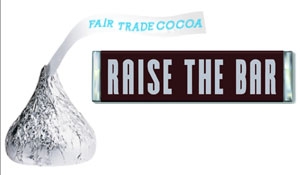
Hershey remains in the headlines. The "Raise the Bar, Hershey!" Campaign has spread the word about Hershey’s labor issues. Last week, reports surfaced about Hershey. This time the exploitation was not occurring on cocoa farms in West Africa, but much closer to home. On August 17th hundreds of foreign student workers organized a sit-in at a Hershey packing plant in Pennsylvania to protest exploitive, underpaid working conditions.
The students, who came from as far away as Ukraine, Mongolia, Ghana and Turkey, each paid roughly $3,000-$6,000 for visas to come to the U.S., for what they thought would be a cultural exchange program. Instead, they found themselves packing boxes of Reese’s and Almond Joy’s at the Hershey plant in deeply exploitive conditions. The students earned between $7.25 to $8.35 per hour, but after reductions for rent and fees associated with the program, the students found themselves with barely enough to live on, and not nearly enough to cover what they spent to come to the U.S.
On Facebook, Hershey responded to consumers’ concerns by saying “The facility in question is not staffed or managed by Hershey's but a third party, Exel.” According to research, Hershey’s bottom line benefits from using low paid, student labor, and yet the company does not take responsibility for these workers.
Hershey has responded similarly to the concerns raised about labor abuse on cocoa farms, stating that since Hershey does not own the cocoa farms, the company cannot be linked to occurrences of forced child labor. And while The Hershey Company “expects vendors to treat employees equitably and fairly” the company does not have policies in place to ensure its suppliers comply with international labor rights standards.
As the country's oldest, and largest chocolate manufacturer, that earned $509 million in profits last year, the Hershey Company needs to do more to protect its workers' rights from bean to bar.
Take Action!
Sign a petition on Change.org:
Hershey: Stop Exploiting Student Guestworkers
Hershey: Raise the Bar! Go Fair Trade and End Forced Child Labor
Learn more: Read our just-released updated report on Hershey – STILL Time to Raise the Bar.
|
|
In Memoriam: Aubrey Hampton |

Aubrey W. Hampton, founder and CEO of Aubrey Organics, a GBN member for many years, passed away on May 9th after a brief illness. A true pioneer in natural hair and skin care, he paved the way for the natural products industry by making plant-based, synthetic free personal care products. Today, his hair and skin care line is sold around the world.
Growing up on an organic farm in Indiana, he watched his mother make her own herbal beauty products. In 1967, Aubrey founded Aubrey’s Nature Labs with two products. A prolific writer, he wrote Natural Organic Hair and Skin Care, a text on herbal cosmetics products now in its sixth printing, and The Take Charge Beauty Book, co-authored with his late wife, Susan Hussey.

In addition to his work at Aubrey Organics, he enjoyed a second career as an award-winning playwright and theatre producer. In 1990, he founded the Gorilla Theatre in Tampa, FL with Susan, also a playwright.
GBN director Denise Hamler spoke about Aubrey, “There was no one more passionate about non-toxic skin care – it is Aubrey’s pioneering work that paved the road for the success of this industry. As we work on the Federal Safe Cosmetics Act of 2011, we know this is important work to safeguard our families against harmful chemicals. His presence will be missed. Our condolences go to his family and extended families at Aubrey Organics and Gorilla Theatre.”
|
|
Green Eco Show Aug. 27 |

The Green Eco Show, an eco-fashion show in its third year, will be held in Seattle, August 27 and is seeking eco-fashion designers to enter.
The show will accept six garments per designer which represent green fashion. Fair Trade garments are encouraged. All designers are screened. The fee to enter garments is $75.00 and all garments will be returned, via shipping to non-local presenters.
Get information on how to enter here.
Admission to the show is free. Models are also encouraged to apply. See videos of past shows or learn more at www.greenecoshow.com.
|
|
WEBINAR 4/14: Green Business Screening 101 |
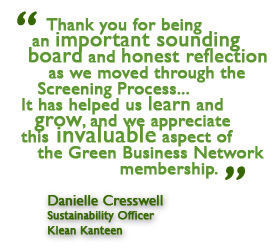
There's no better way to reach your target audience than to be featured in the National Green Pages™. Register now and join us on April 14 for a guided tour to learn how to apply for the Seal of Approval and get listed.
Screening 101 Webinar with Green America staff
Thursday, April 14th at 2EST/1CT/12MT/11PT
Want to be in the national honor roll of green businesses? Wish your company information was in the Whole Foods checkout line? Then now is the time to apply for the Seal of Approval. To appear in the 2012 National Green Pages and use the coveted Green America Seal of Approval, companies must submit a screening application by May 13th.

Join us on April 14th for “Screening 101” with Tish Kashani, our Senior Researcher, and Rebecca Shaloff, our Screening Director. We will walk you through the application, offer our Top 5 Helpful Hints, and answer your burning questions. If you are new to the Green Business Network or your initial application was not successful — now is your chance for a special guided tour of the process! And it’s easier than ever with our new online application. Register for this webinar now »
If you can’t participate in this interactive webinar or don’t know your screening status, e-mail questions to Tish Kashani at tkashani@greenamerica.org. Or get more information about the screening process and criteria.
Want to get started on your screening application right away? Register for an account and begin the process.
|
|
Adidas Commits to 100% Sustainable Cotton |
Adidas plans to reduce its environmental impact by 15% by 2015 and source all of its cotton sustainably by 2018, according to the company’s latest sustainability report.
The report details the company’s plans over the next five years. With most of their production outsourced, Adidas has teamed up with other industry giants to build critical mass for the need of decreasing environmental impact throughout their supply chains. Adidas is working together with H&M, Levi Strauss & Co., Marks & Spencer and IKEA to accelerate the adoption of sustainable cotton production standards, created by the Better Cotton Initiative.
Adidas will also encourage more suppliers to use the String It system the company developed to track materials along the supply chain.
|
|
Pepsi Introduces World’s First 100% Plant-Based Plastic Bottle |

Two years after Coca-Cola Co. unveiled a bottle made partly from plant materials, PepsiCo says it is introducing a better one: the world's first plastic bottle made entirely from plant-based materials.
Pepsi announced a new "green" bottle that is 100 percent recyclable and made from bio-based raw materials, including switch grass, pine bark and corn husks. In the future, the company expects to broaden the renewable sources used to create the “green” bottle to include orange peels, potato peels, oat hulls and other agricultural byproducts from its foods business.
PepsiCo says the new bottle, which could be several years from hitting the wider market, will reduce its dependence on petroleum. Their recent environmental innovations include a 100% post-consumer recycled bottle for the Naked Juice brand, a fully compostable bag for SunChips, and a program that replenished six billion liters of water across India after their manufacturing facilities consumed five billion.
Both Coke and Pepsi will continue to fill their bottles with their namesake carbonated drink products made primarily from high fructose corn syrup, which has been linked to increased risks for diabetes and heart disease.
|
|
Community Investing Guide, March 2011 |
|
|
Seventh Generation Names New CEO |

Seventh Generation, leading producer of sustainable household products, announced that its Board of Directors has named John Replogle to serve as the company's Chief Executive Officer and President. Repogle has served as the CEO of leading green personal care products company Burt’s Bees since 2006, and was previously the general manager of Unilever’s skin care division in North America.
Replogle's appointment ends a CEO search commenced by the Seventh Generation Board following the September resignation of Chuck Maniscalco, who joined the company in 2009, replacing company founder, Jeffrey Hollender, as CEO. Peter Graham, Seventh Generation's Chairman, said that the Seventh Generation board unanimously selected Replogle based on his track record leading a complex organization, his demonstrated commitment to corporate responsibility, and his strong executive and personal qualities. |
|
Chevy/GM Announce Hybrid Line |
Chevy/GM begin production of the Volt. (December 2010)
Green America's individual members sent tens of thousands of emails and asked Chevy dealers nationwide to offer an electric vehicle.
|
|
Apply for the Seal of Approval - New Online Application! |
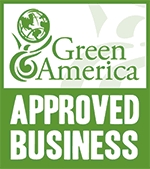
The Green America Seal of Approval is your key to many of the most effective marketing doorways – from the Green Festivals® to World of Good at eBay. Our new online application makes it easier than ever to apply for the coveted Seal of Approval.
We teamed up with iReuse, GBN member and sustainability software gurus, to launch “iScreen.” It’s a brand new, easy way to fill out the screening application to apply for the Seal.
You can get started right now –
1) Go to this link
2) Then just click on “register for a new account.”
If you’ve been meaning to fill out the form, but have been putting it off, now is the time.
Approved members are eligible to exhibit at Green Festivals and are listed in the National Green Pages – print and online, which is the go-to site for thousands of mission-driven consumers.
Questions about the screening process or criteria? Please visit this page.
Questions about your company’s eligibility or membership status? Please contact Senior Researcher, Tish Kashani at 202-872-5338 or screening@greenamerica.org.
|
|
Hershey’s CSR Report or NOT! |
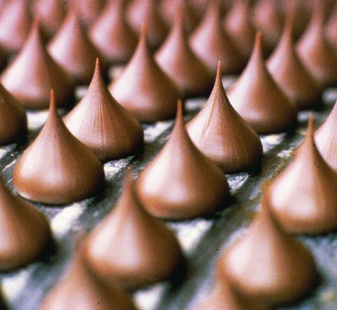
Last Monday, Hershey, one of the largest and oldest chocolate manufacturers in the US, released its first-ever corporate social responsibility report. According to a counter report released at the same time by Green America, Global Exchange, ILRF, and Oasis USA, Hershey failed to outline a credible plan for ensuring that its supply chains are free of forced labor, human trafficking, and abusive child labor – common problems for companies that source cocoa.
Coverage across the country on the two reports has called for Hershey to develop a stronger commitment to Fair Trade. John Robbins at the Huffington Post cited investigative reporting on child slavery in the Ivory Coast, and called the Hershey CSR report a “classic example of the practice of greenwashing - a PR effort to mislead the public into thinking a company's policies and products are socially responsible, when in fact they are not.”
Hershey has asked the public to give feedback on their corporate responsibility. Green America recommends respondents urge Hershey to work toward Fair Trade certification of their products, a commitment other large companies that source cocoa, such as Ben & Jerry’s and Cadbury, are currently working on with their products.
Tell Hershey what you think »
Read suggested comments on the Green America website »
Read the Hershey CSR report »
Read the joint report on Hershey’s CSR from Green America and allies »
HersheyReport_1.pdf
|
|
People’s Choice Awards: The Top Ten Nominees Are In! |
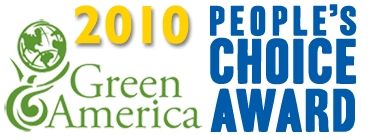
Every year, Green Americans nominate their favorite green businesses for the People’s Choice award. Find out below who made the cut of the top ten most popular green businesses. Voting will be open till October 6, and the award will be announced at the Green Festival in San Francisco. Meet the top 10 nominees...
People's Choice Awards Top 10 Nominees
(Listed in alphabetical order)
1. Brittanie's Thyme
Cedar Springs, MI | www.brittaniesthyme.com
"Small, upcoming company providing USDA-certified organic skin-care that is safe, economical and truthfully green. No excess packaging, reasonable prices, great natural products for your skin (and they work!)."
—Freyja G., La Grange, IL
2. Digital Hub
Chicago, IL | www.digitalhubchicago.com
"I work with dozens of printers as a marketing professional. Digital Hub stands out in its choices to voluntarily reduce its carbon footprint and preserve the Earth while continuing to deliver a great product."
—Nicholas Q., Homewood, IL
3. Ecobunga
San Carlos, CA| www.ecobunga.com
"This site works to help consumers save money and to encourage purchasing of greener products. They really work hard to find the best green deals and keep the site up to date with the latest green discounts."
—Elizabeth L., Swissvale, PA
4. Faerie's Dance
Harbor City, CA | www.faeriesdance.com
"This one-woman company offers affordable, beautiful, sustainable organic clothing, all beneficial for the consumer and environment (with the widest range of eco-intimates I’ve ever seen!)"
—Trisha F., Raleigh, NC
5. gDiapers
Portland, OR | www.gdiapers.com
"50 million diapers get tossed each day and each one takes up to 500 years to biodegrade. Ick. Home compost, toss, or flush the biodegradable gRefill for the smallest footprint on earth. gDiapers break down in 50-150 days."
—Rob D., Lake Oswego, OR
6. Grounds for Change
Poulsbo, WA | www.groundsforchange.com
"Fresh roasted high quality coffee. Organic, Fair Trade, shade grown, carbon-free certified, 1% For the Planet. They are always looking for ways to reduce their business' impact on the planet and improve the lives of those that live on it."
—Jodi R., Bethel Park, PA
7. Hazelnut Kids
Traverse City, MI | www.hazelnutkids.com
"This is by far my favorite green toy store: incredible customer service and a great selection. Easy- to-navigate site, and a tree planted for every toy sold."
—Mare D., Sag Harbor, NY
8. Stay Vocal
Norwell, MA | www.stayvocal.com
"Not only are they re-styling t-shirts that will just be thrown away, they ALSO package in recycled boxes! Repurposing stuff that is landfill bound is a great thing to do... best re-use project I've ever seen."
—Jennifer V., Las Vegas, NV
9. Theo Chocolate
Seattle, WA | www.theochocolate.com
"I'm continually amazed at how deeply Theo cares about their community — making sure the farmers are being paid well through transparent processes, letting farmers voice their needs, and educating the public about Fair Trade."
—Cat G., Corvallis, OR
10. We Add Up
Wickliffe, OH | www.weaddup.com
"They use 100-percent certified organic cotton for their tees, are a carbon-neutral company, offer carbon-free shipping, and they donate 12 percentof their sales to environmental non-profits."
—Hollie Ann H., Canton, OH
Vote for your favorite at the Green America website »
|
|
Fair Trade Boom |
A decade ago, coffee was the only Fair Trade product available in the US, and it was hard to find. Today shoppers can easily find a wide range of Fair Trade products in stores, with more to come.
Globally, Fair Trade sales hit the $5 billion mark last year, helping more than one million producers (and more than five million family members) lift themselves economically.
In the 1990s, the organic market skyrocketed. Our editors tackle the question of whether Fair Trade is poised for the same growth in this decade. |
|
T.S. Designs Works Locally to Build a Green Economy! |
Burlington, North Carolina is about to get a new cooperatively owned grocery store thanks to the organizing efforts of community members, including Eric Henry of T.S. Designs and Green America board member.
The project received a $300,000 state grant that will propel the construction of the co-op which is owned by 1,600 residents. Henry is excited to be part of this opportunity to “reconnect our community to local agriculture.”
Henry presented T.S. Design’s Cotton of the Carolinas at the BALLE Conference. This sustainable “dirt to shirt” line keeps the entire labor process within the Carolinas. The presentation with t-shirt maker Brian Morrell and cotton farmer Ronnie Burleson was the talk of the conference.
Learn more >> http://www.thetimesnews.com/news/downtown-34060-grant-street.html?cb=1275055231
See highlights from the BALLE presentation >> http://www.tsdesigns.com/balle-presentation/
|